Bikes of the Atlas Mountain Race 2023: from comfort gravellers to speed weapons, here’s what caught our eye
Covering 1,300km / 800mi of Morocco’s gravel roads and mountain passes, the Atlas Mountain Race demands a tech-heavy approach for its 3+ days of bikepacking racing
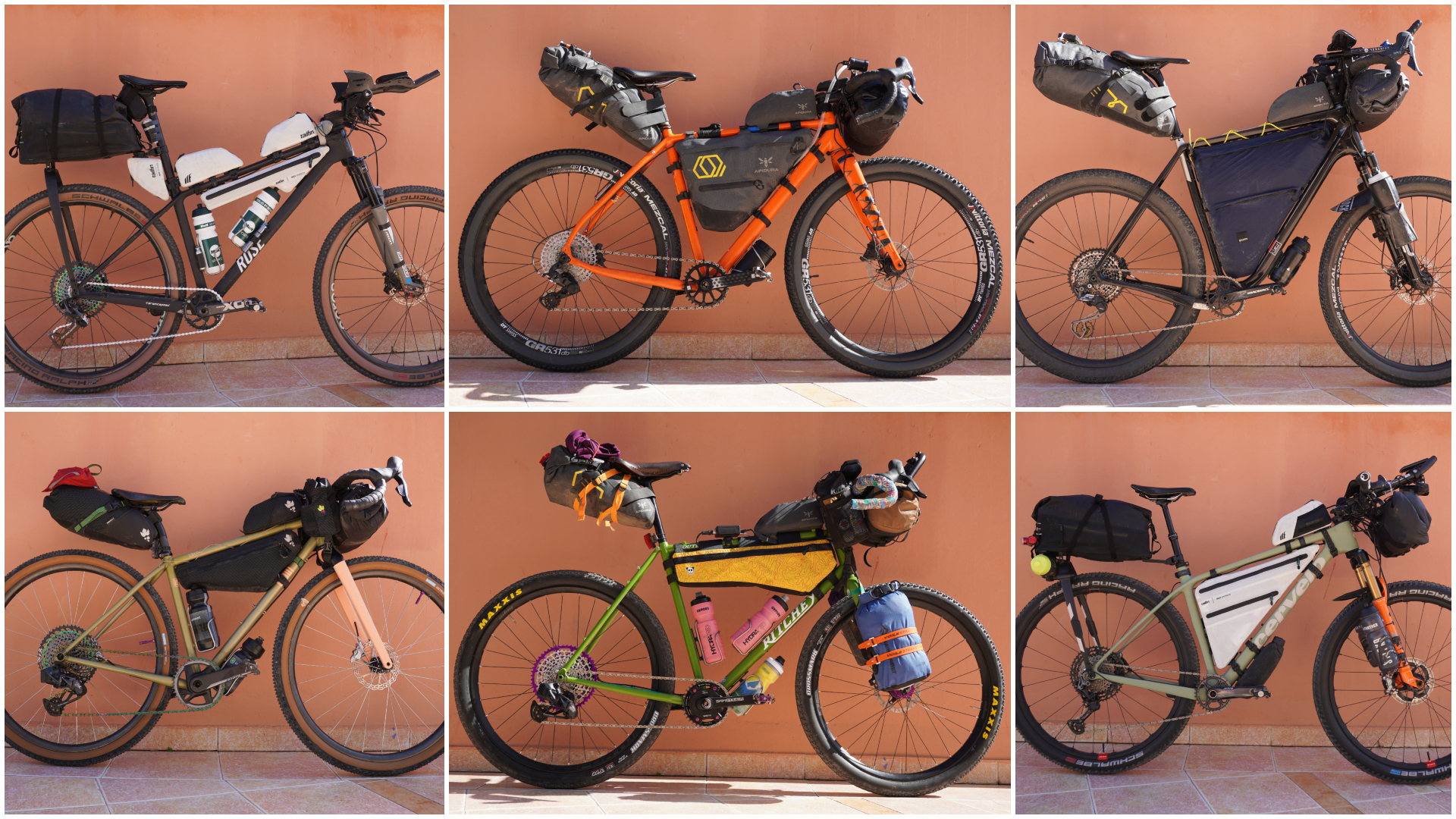

Anna Marie Abram
Standing in the warm orange sun on the outskirts of Marrakech, Morocco, it’s hard to imagine that the riders taking to the start line will be battling temperatures of -5 degrees later this evening - climbing above 2,500 meters and into the snowline of the High Atlas mountains.
Organised by Nelson Trees - the man behind the Silk Road Mountain Race in Kyrgyzstan and, new for 2023, the Hellenic Mountain Race in Greece - this is the third edition of the Atlas Mountain Race (AMR) and it’ll cover 1,302km and 20,200m meters of climbing (809 mi / 66,000 ft) as it winds its way from Marrakech south into the mountains and then west over to the beautiful city of Essaouira on the Atlantic coast.
Here’s a route of the race and you can ‘dot-watch’ over here:
As with Trees’ other events, the AMR is an unsupported, single-stage bikepacking race with a set route and checkpoints along the way - the clock never stops. The race leaders will be expecting to finishing in about three and a half days but the after party is on February 11th, so plenty of time to ‘ride’ the course rather than ‘race’ it - and really make the most of Morocco's gravel!
The variety of kit and bike setups spans drop bars, aero packs, tri bars and fully rigid frames to flat bar, fat tire, full suspension rigs with a very high luggage capacity - and most are some combination of each.
One theme that pervades all the bikes, though, are tech-heavy solutions - here’s a round up of the best gravel bikes which caught our eye.
Bikes of the 2023 Atlas Mountain Race
1. Tony Keane's polychrome Ritchey
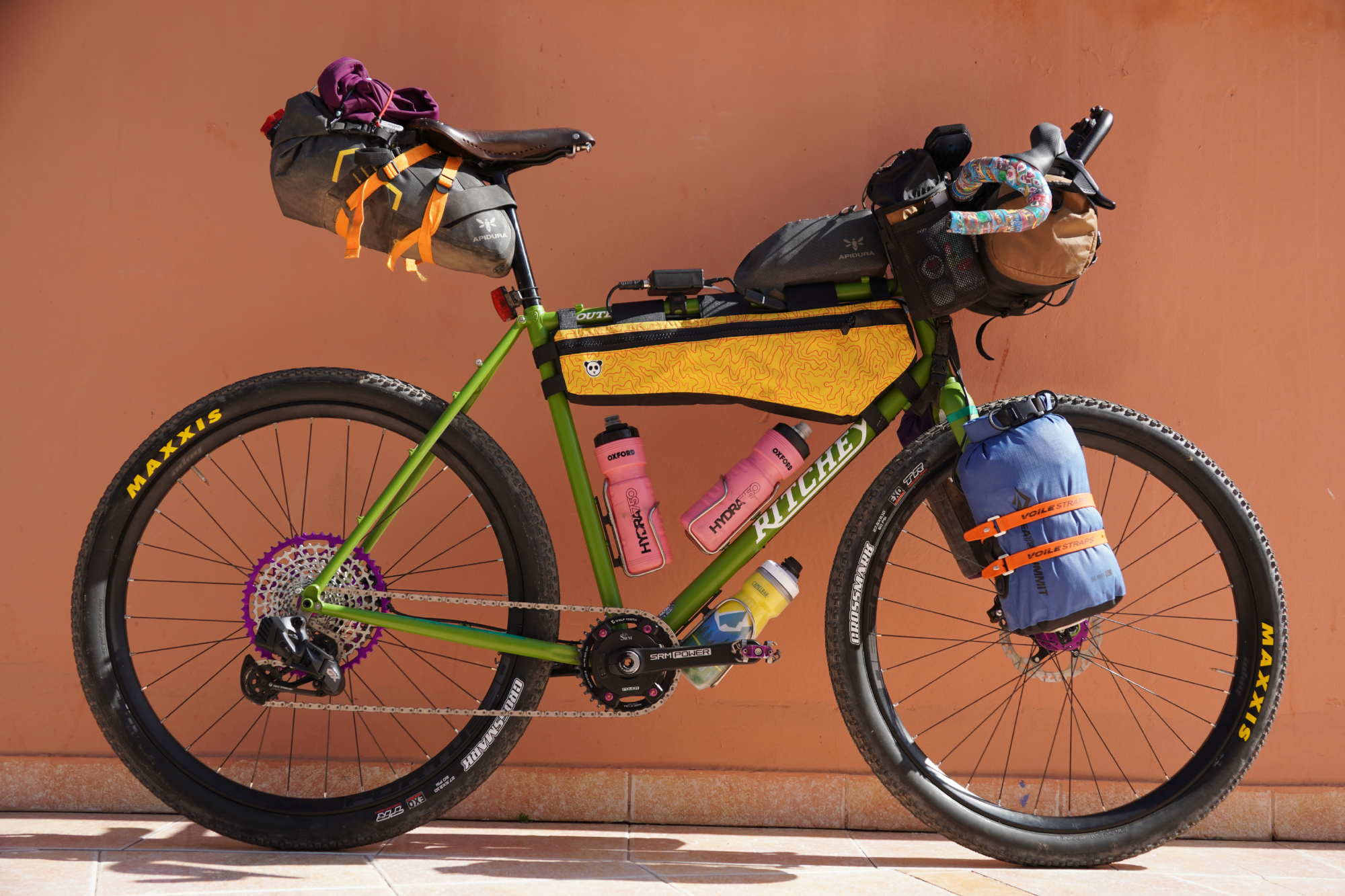
First up, we have Tony Keane who indisputably claims the crown of riding the most eye-catching rig of the AMR. Colour-matching your bar tape is one thing but going for a polychrome and playing on the highlights throughout your kit is quite another.
The Voile straps, Sea-To-Summit dry bag, Rouge Panda frame bag and Oxford Hydra 750 - interestingly paired with Camelback lids for improved leak-proofing - each draw out the oranges, blues, yellows and pinks of the bar tape, and are all set against the leafy green of Keane's steel Ritchey frame.
Few custom builds are complete without a heavy helping of purple anodizing - and that holds true here. Hope hubs are matching the Hope pedals, while the Wolf Tooth chainring bolts and Garbaruk cassette all continue the purple anodized theme.
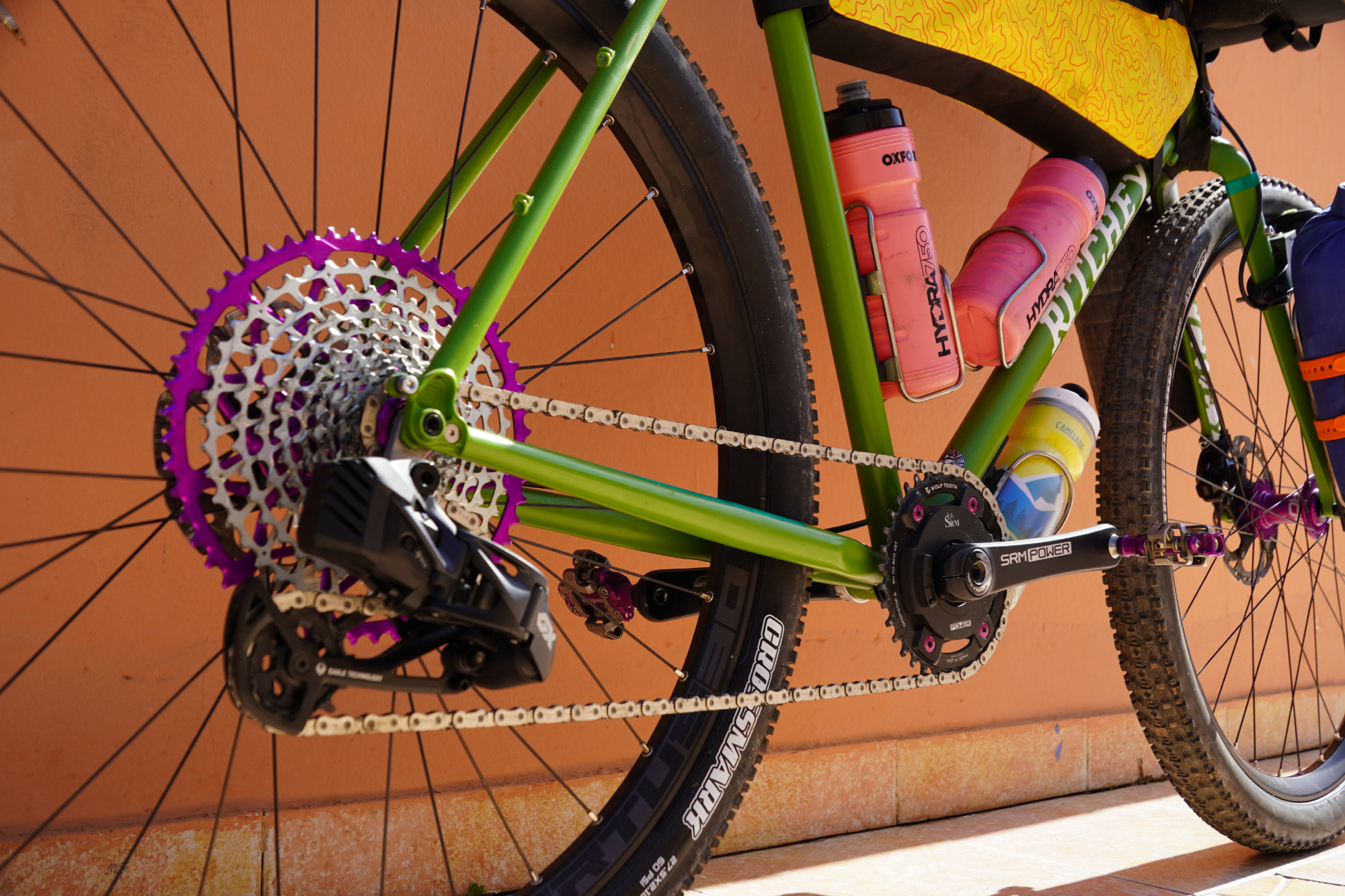
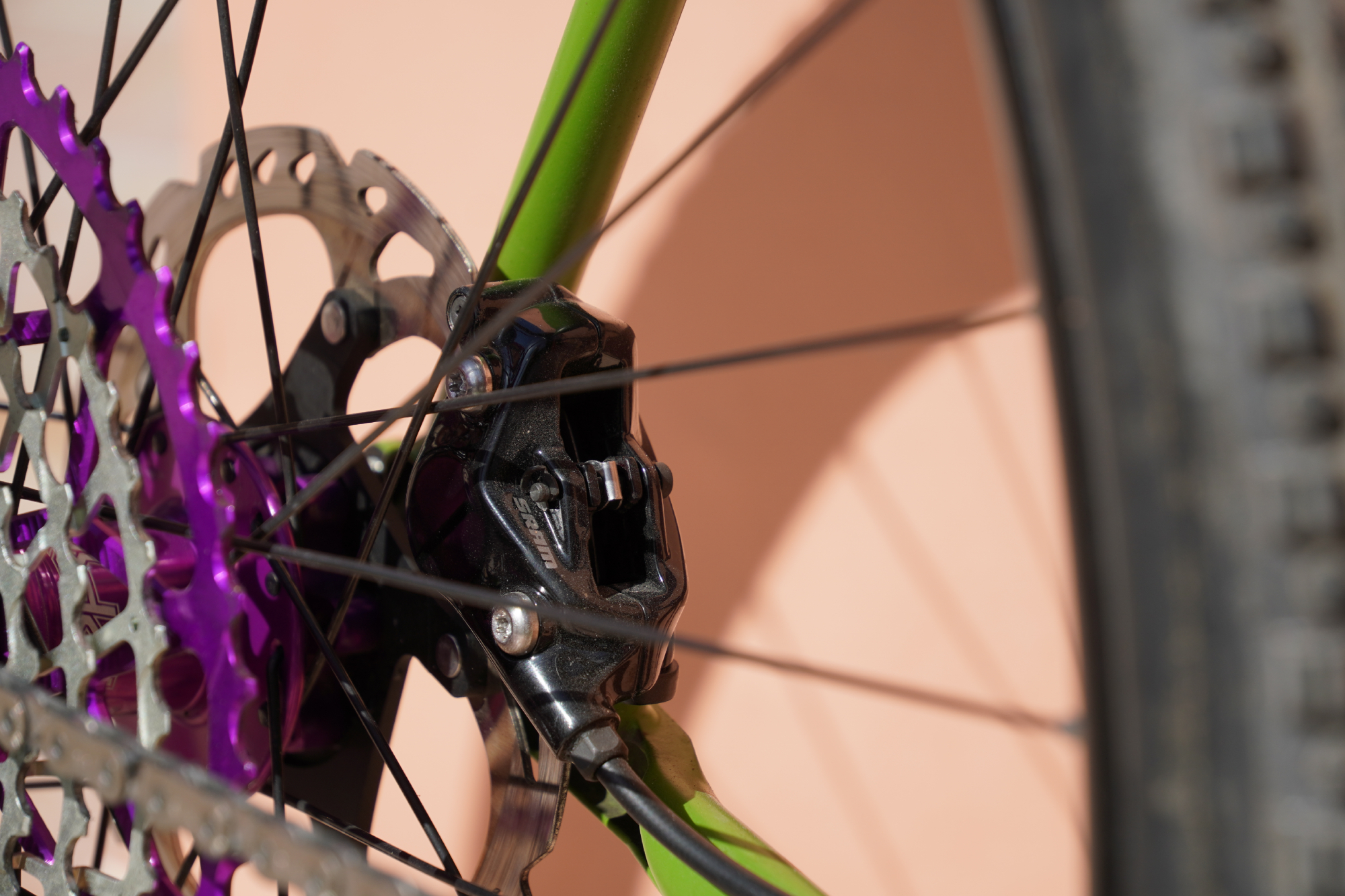

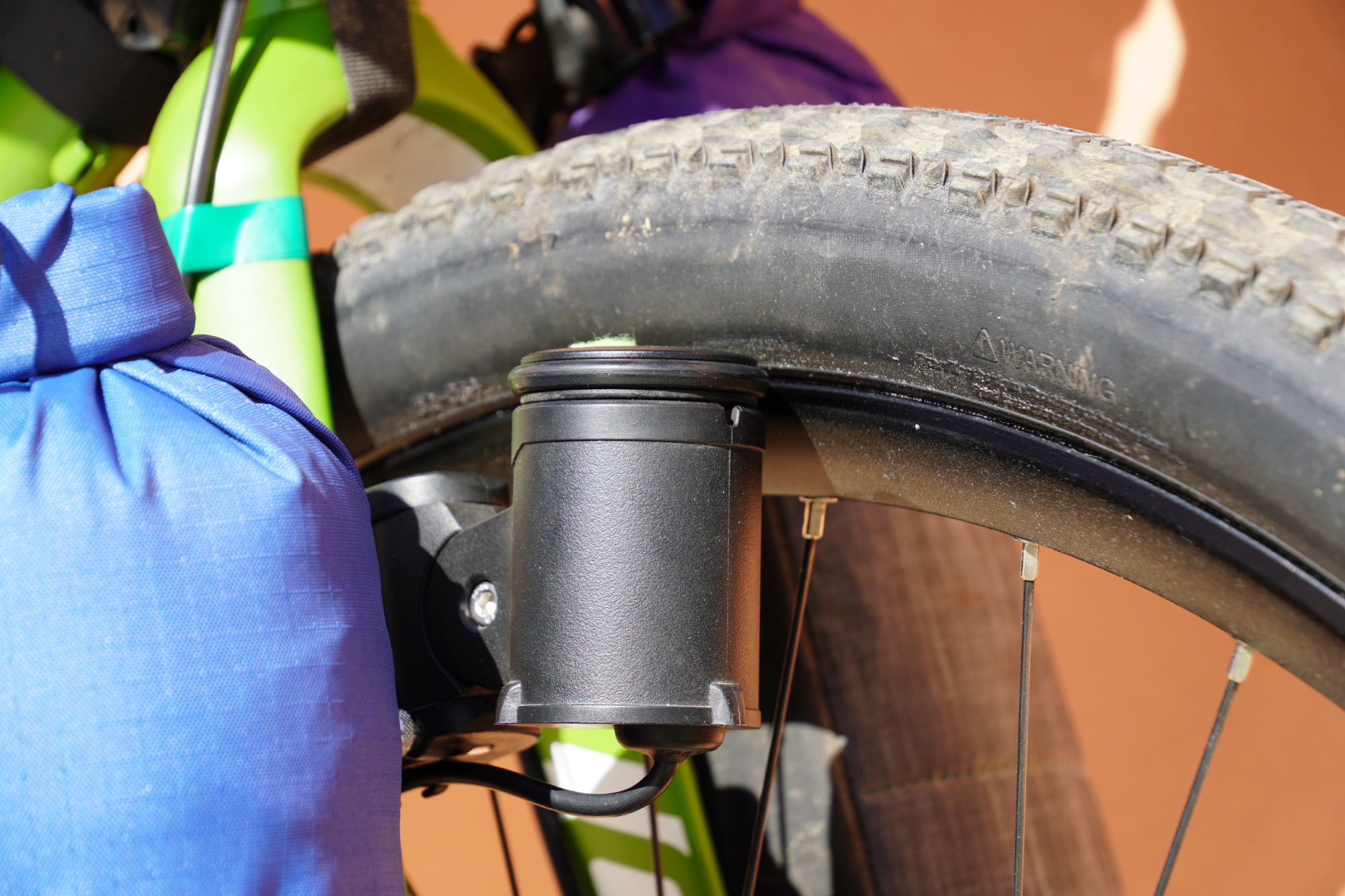
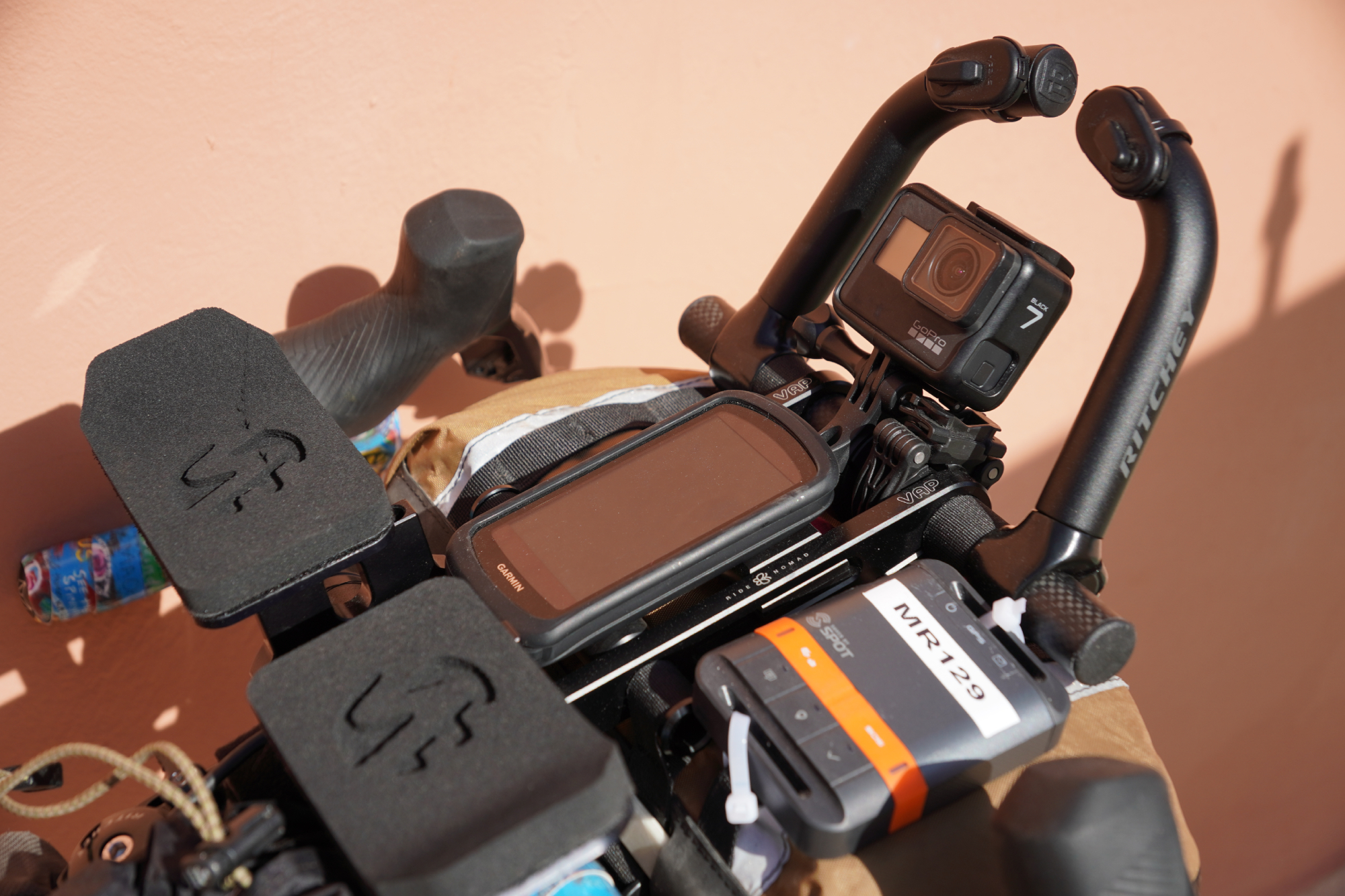
There is one glaring omission - made all the starker by the heavy prevalence across so many of the riders’ bikes here, all anticipating technical descents. And that is the brake calipers or, more specifically, the use of the SRAM’s rather than Hope’s (anodised) four pot model.
Could this be a poignant reminder of the futility of chasing perfection? Similar to the intentional mistakes which are sometimes included in Islamic art, done to show humility and guard against hubris - as only God can produce perfection.
No. It was simply the constraints of money and time - maybe after next Christmas we’ll see Hope’s flashing purple calipers on Keane's bike!
It’s not just the colors that have been given attention to details, a rim based dynamo (rather than the more common hub based units most people are using) means that Keane can completely remove the friction when he doesn’t want it - but still has ready power for topping up his GoPro bike camera (his Garmin 1040 Solar probably won’t be needing it!)
2. Sebastian Breuer's speed optimised Rose
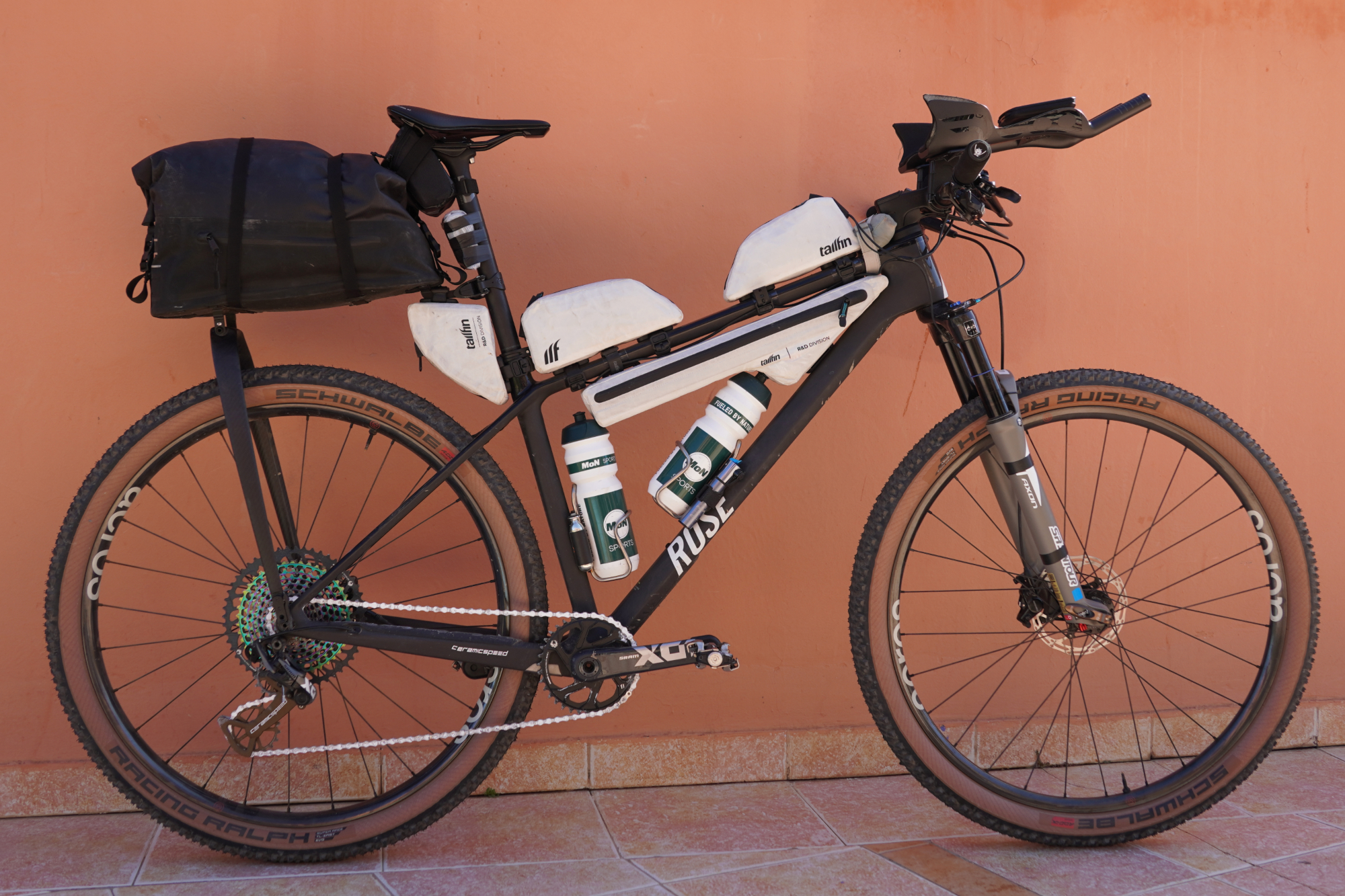
Sebastian Breuer is one of the favourites after winning the Badlands bikepacking race in Spain last year and his rig reflects that.
The most noticeable difference is quite how much less kit Breuer is taking compared to some of the other riders. If you’re going to be out on the course for half the time, you can get away with less - and if you’re carrying more, the extra weight almost causes a self fulfilling prophecy that you’re going to go slower.
But the optimizations pervade the build. A fresh-out-the-packet waxed chain from CeramicSpeed (and accompanying pulley wheel) will hopefully be saving a few watts from the drivetrain - but beyond that, from past experience, Breuer is expecting to get 800km of 1,300km total done before there’d be any need to re-lube.
Deda carbon handlebars are another key feature. Lighter and less adjustability than certain alloy area extensions, the cupping profile works well for Breuer and are the fastest option he’s found.
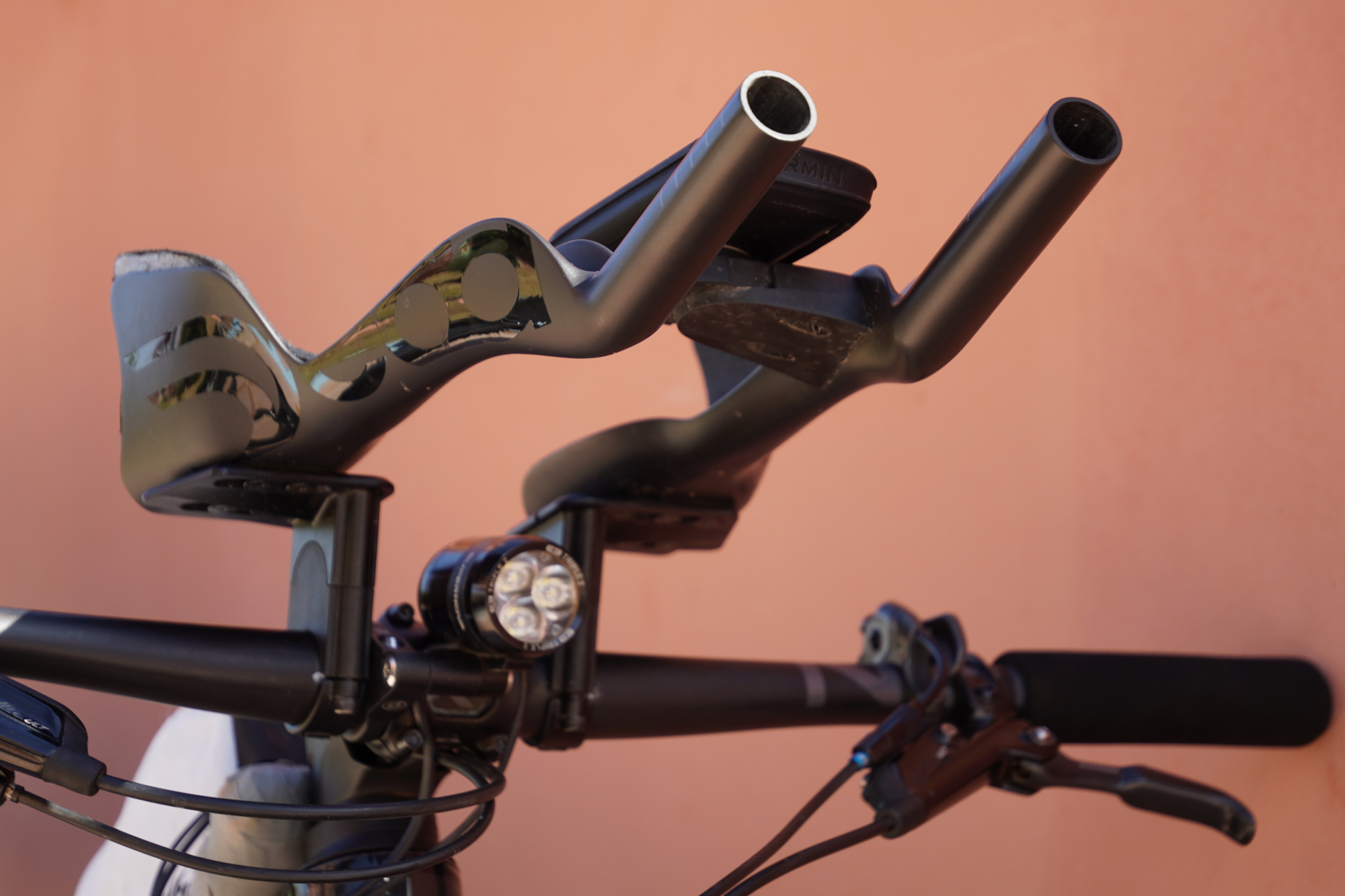
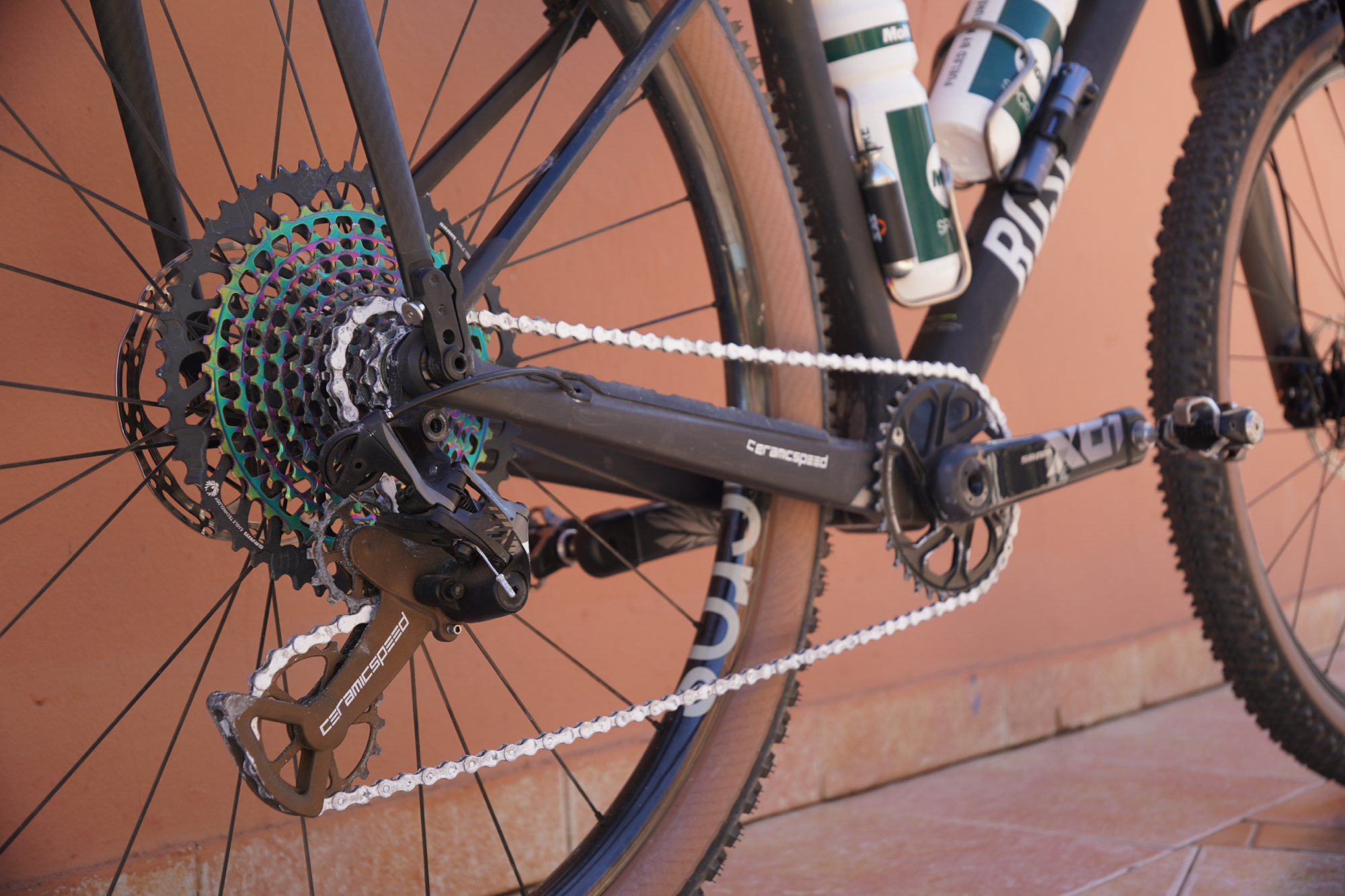
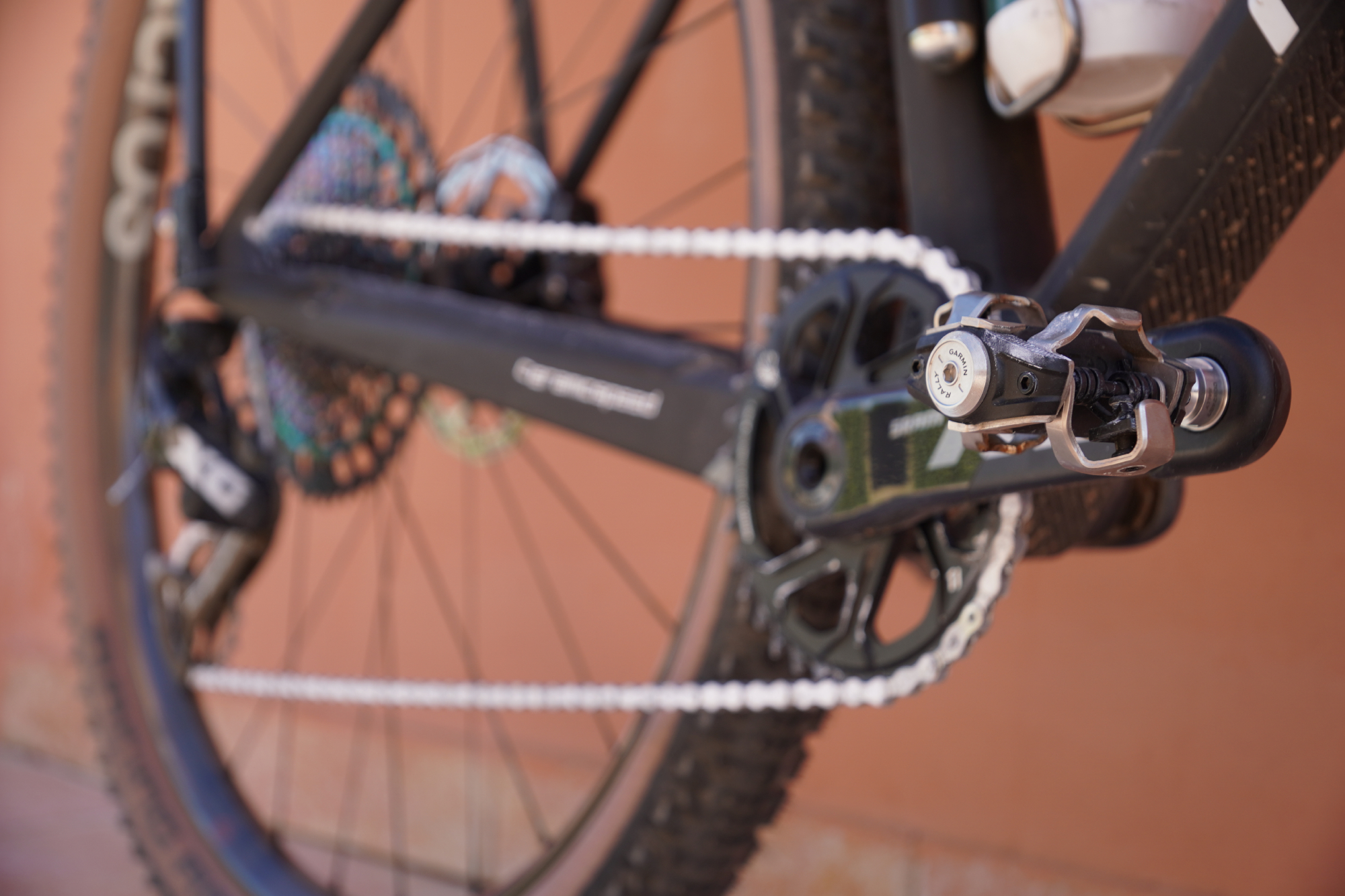
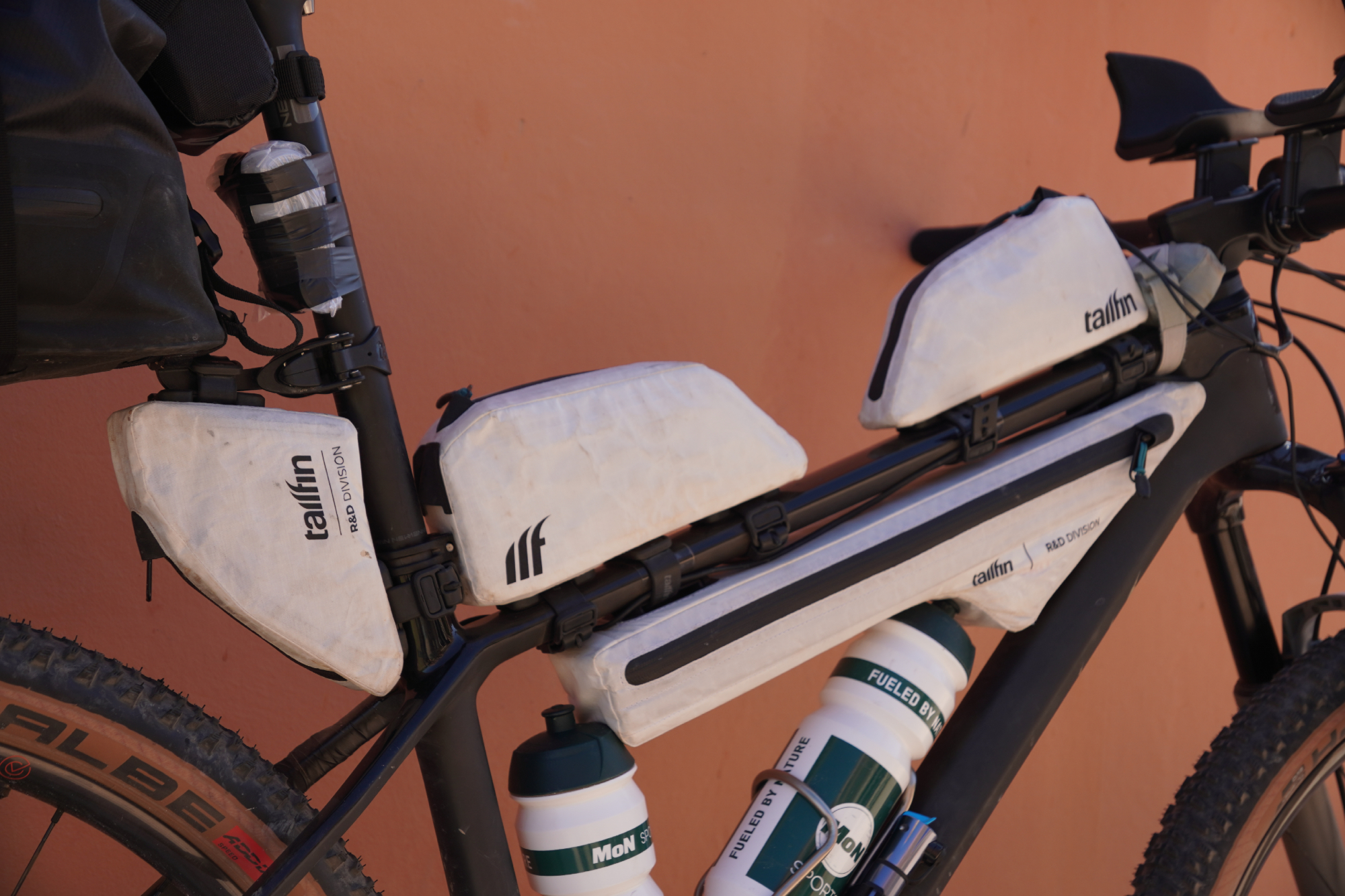
Where other riders are using dropbar handlebars, Breuer has opted for an MTB for the Atlas Mountain Race. The gains on the descents and cushioning of the wider tires should negate the heavier weight and higher rolling resistance - with those aero bars, speed on the flat should be approximately equivalent.
Despite various calculations having suggested that batteries are more efficient than dynamo hubs (the proportionally tiny amount of weight compared to a full human and bike generally outweighed the increased resistance of a dynamo), Breuer and most of the other riders have opted for a human powered setup. Even if it is less efficient in terms of watts, not having the mental stress of managing battery life or charging yet another battery is worth the trade off.
Garmin’s Rally XC200 power meter pedals are specced and Breuer’s plan is to put out 210 watts on the flat and between 250 and 280 watts on the climbs - over the course of about three and a half days that the race is likely to take.
3. Chris Hall's fun-focused Cervélo
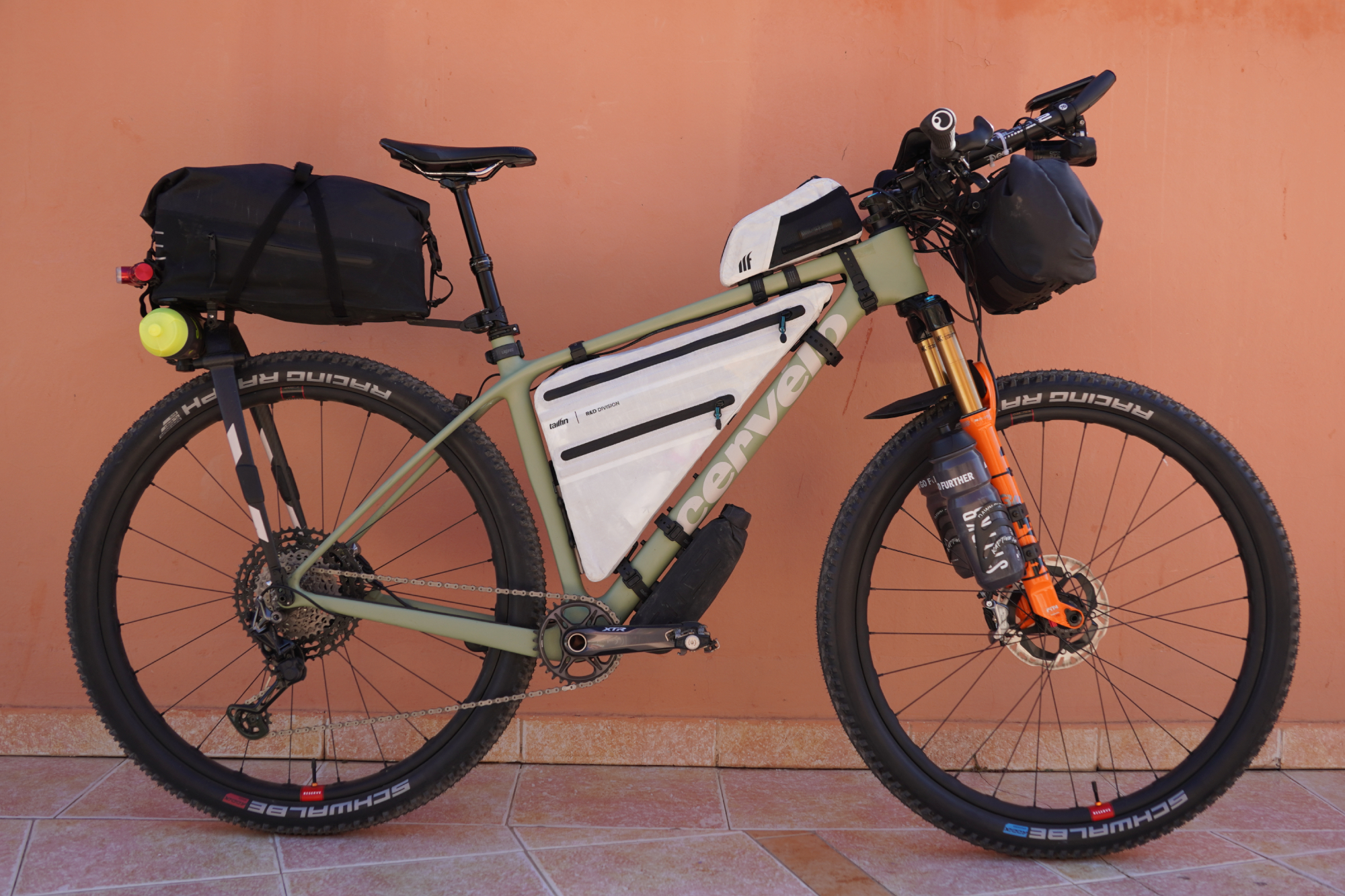
Ultra-endurance cyclist Chris Hall is choosing to ‘ride’ the route rather than race it, taking in and enjoying the adventure rather than pushing through in a miasma of pain and sleep deprivation (although there may still be some of that!)
He’s carrying a little more kit with a few more comforts, thnk extra layers, food and the various bits for more days in the mountains. Similar to many riders, he’s running dynamo lights and a Garmin Edge 1040 Solar for greater self sufficiency out on the trails. Same as Sebastian Breuer, he’s opted for an MTB and aero bars as the best balance between speed on the descents, climbs and flats.
As a Tailfin Ambassador, his bike is accordingly kitted out, with an Aeropack out back (which many of the riders are using just as of course) and the Downtube Pack underneath. Out front, a pair of suspension fork mounts provide the bosses for Hall’s bottles.
More notable are the bright weight toptube and frame bags - not a colour Tailfin typically uses and with the game given straight away by the ‘R&D DIVISION’ printed on the side. Currently Tailfin doesn’t actually offer frame bags or top tube bags - and they would certainly be a logical next step in the brands range.
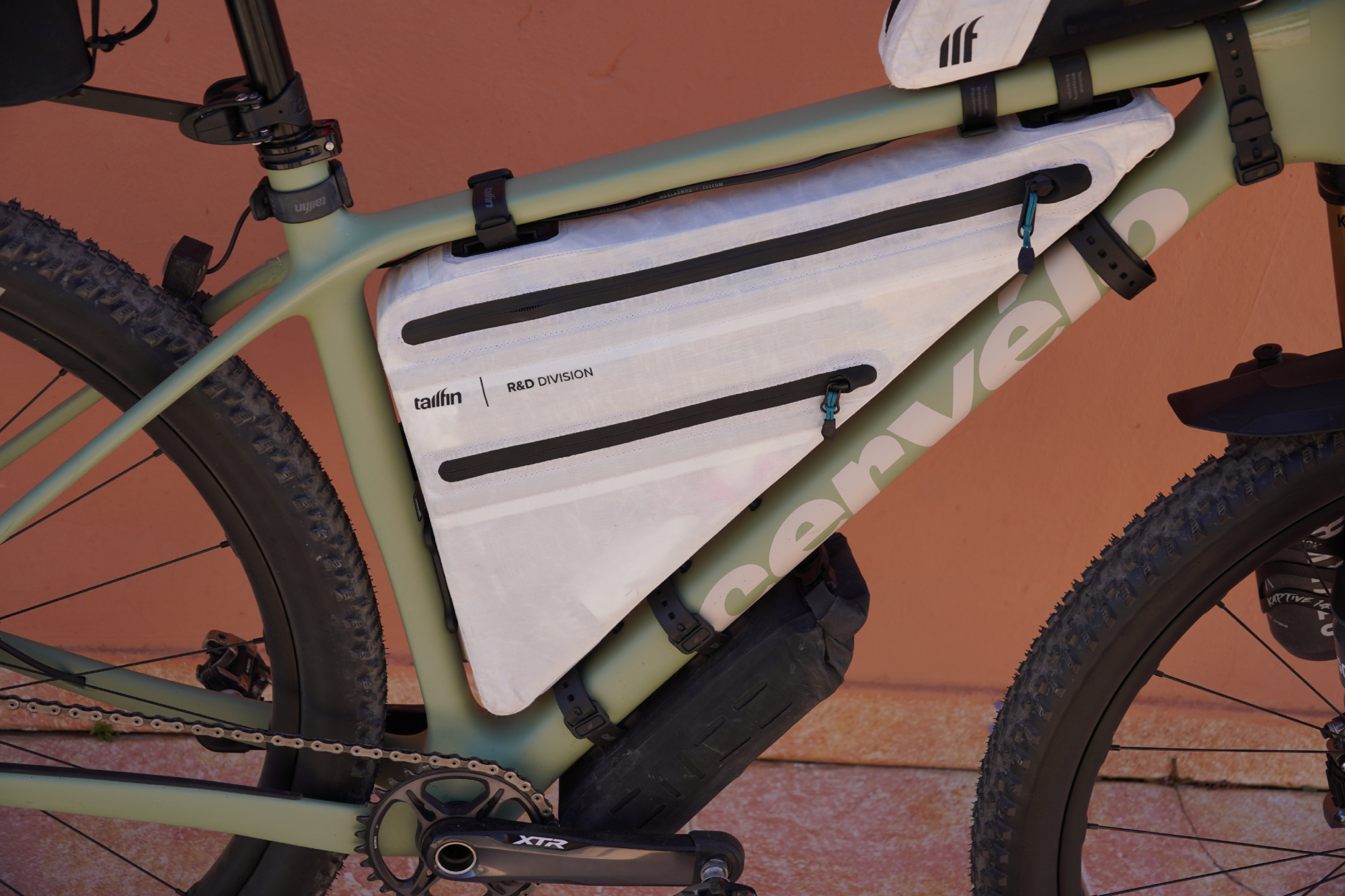
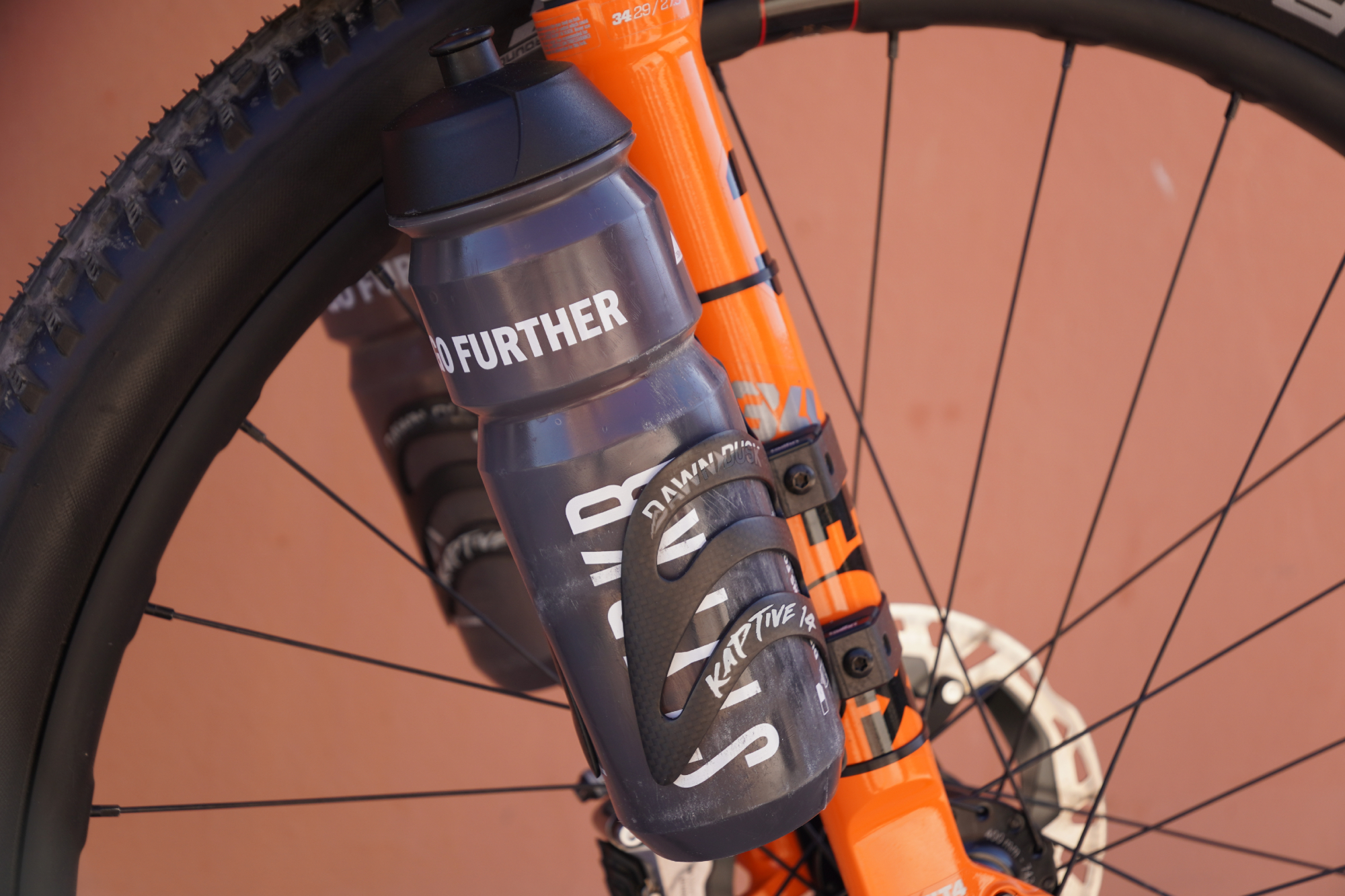
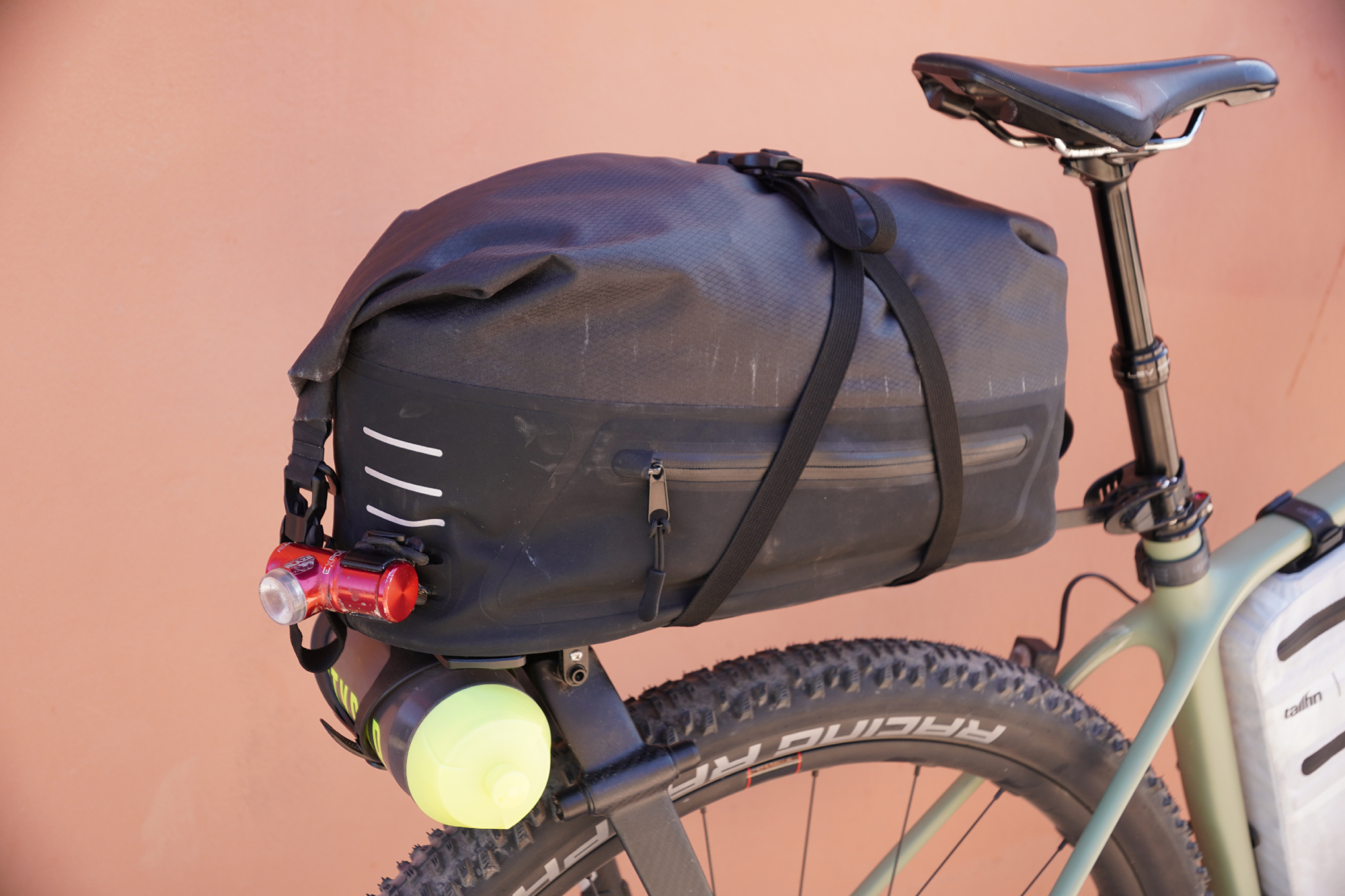
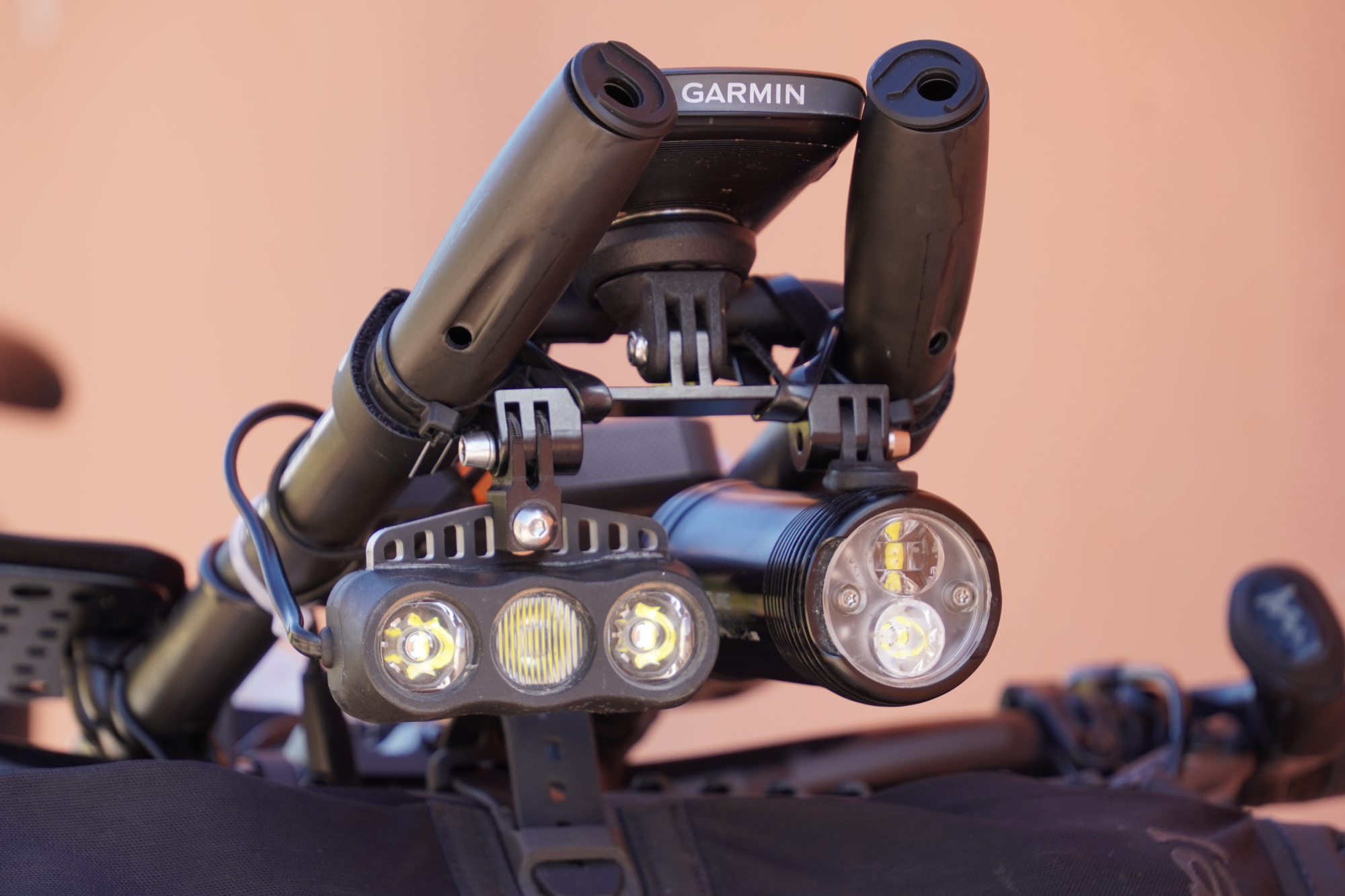
Both had a host of neat features such as the rubberised mounting points - which we’ve had experience with from Tailfin’s current range, and impressed with their grip and lack of marking - as well as various pockets and pouches inside the bags. These are pre-production models, so it’ll be interesting seeing what Tailfin does end up bringing to market…
4. Patrick Zorkovic's European custom build
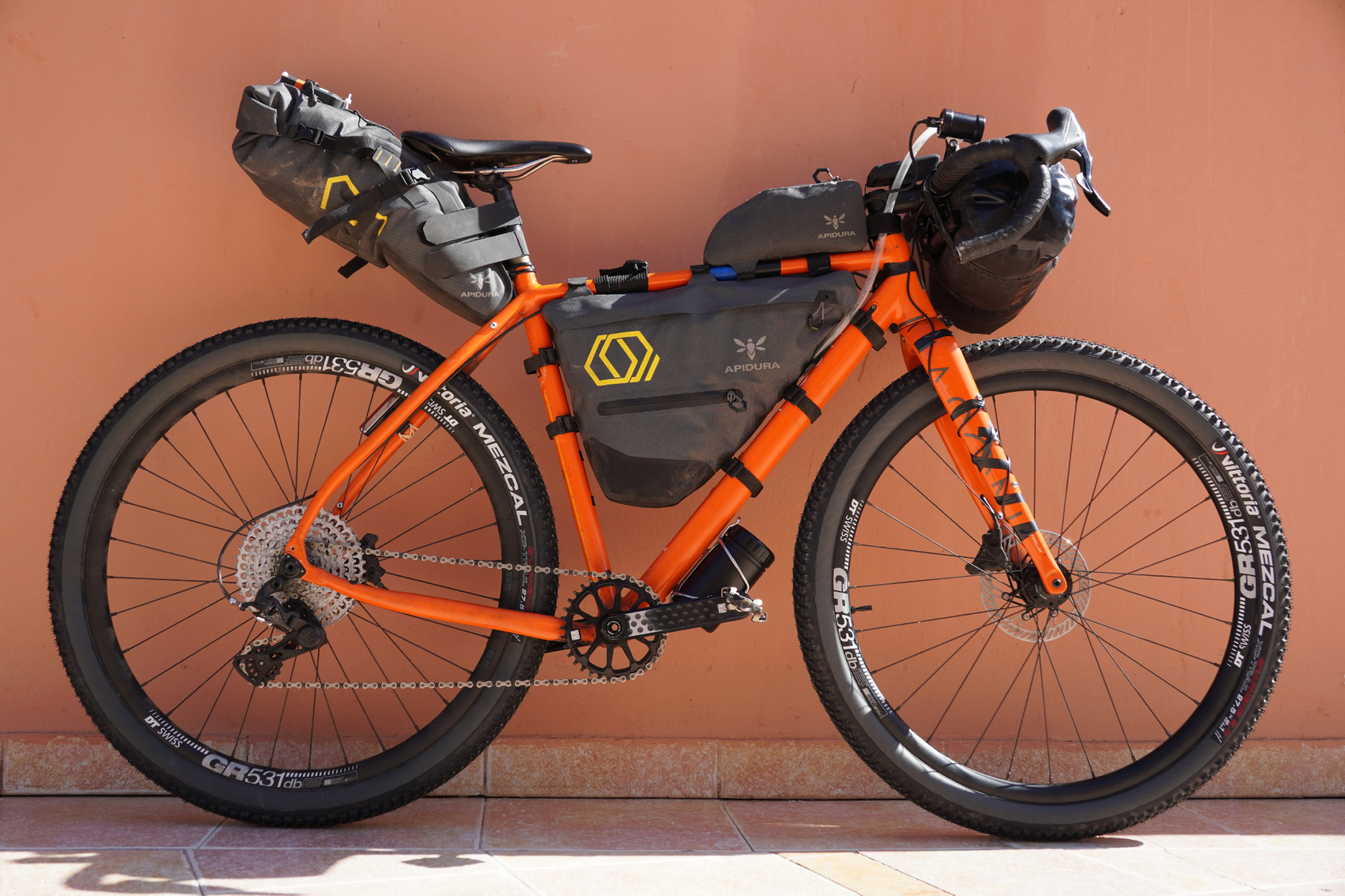
For many a custom build is something of a luxury, but for Patrick Zorkovic his Mason Bokeh was a product of necessity. Bought and built during the height of the first lockdowns, parts and products were exceedingly hard to come by. Fortunately for Zorkovic, the parts he was able to source were mostly from boutique European brands - so not an awful situation to be in!
First is the frame, a Mason Bokeh with Deidecci aluminium tubing. Aluminium doesn’t have to be a budget material and there’s actually a lot going for it: it’s more ductile than carbon so you don’t have to worry so much about knocks, it’s lighter than steel and cheaper than titanium (as well as both carbon and steel).
Mason recommends 50mm on 650b wheels as the maximum gravel bike tire size compatible with the Bokeh - but Zorkovic has still been able to squeeze in a set of 2.1in Vittoria Mezcal tires nevertheless.
Availability of Campagnolo was much better than either SRAM or Shimano back then - and the Ekar groupset is excellent just in itself. The Ekar carbon crankset - lovely carbon design though it is - didn’t really fit the more industrial and metallic build Zorkovic was developing. Luckily enough, Ingrid’s crankset was in stock and the blocky utilitarian aesthetic sets things off nicely.
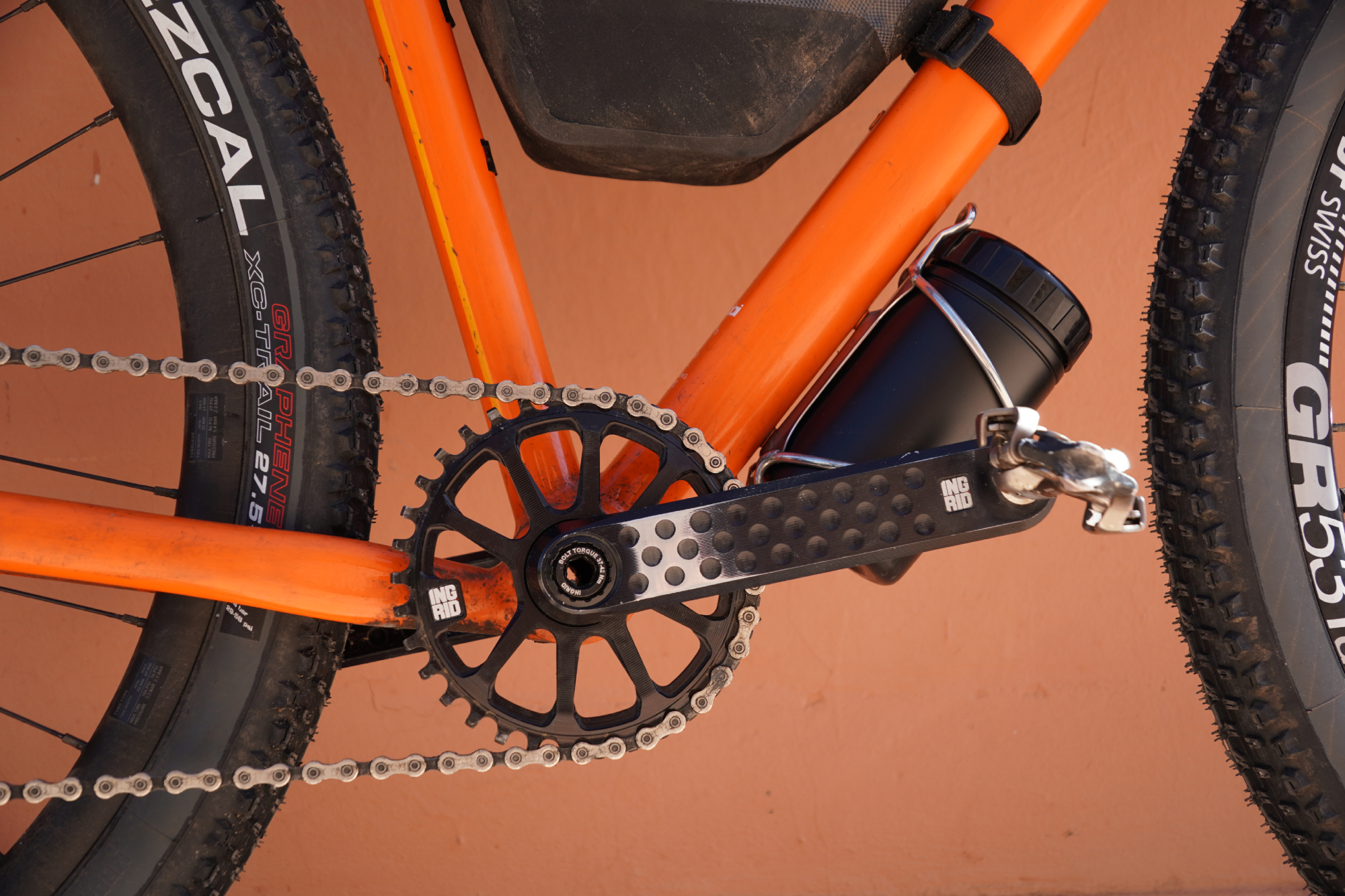
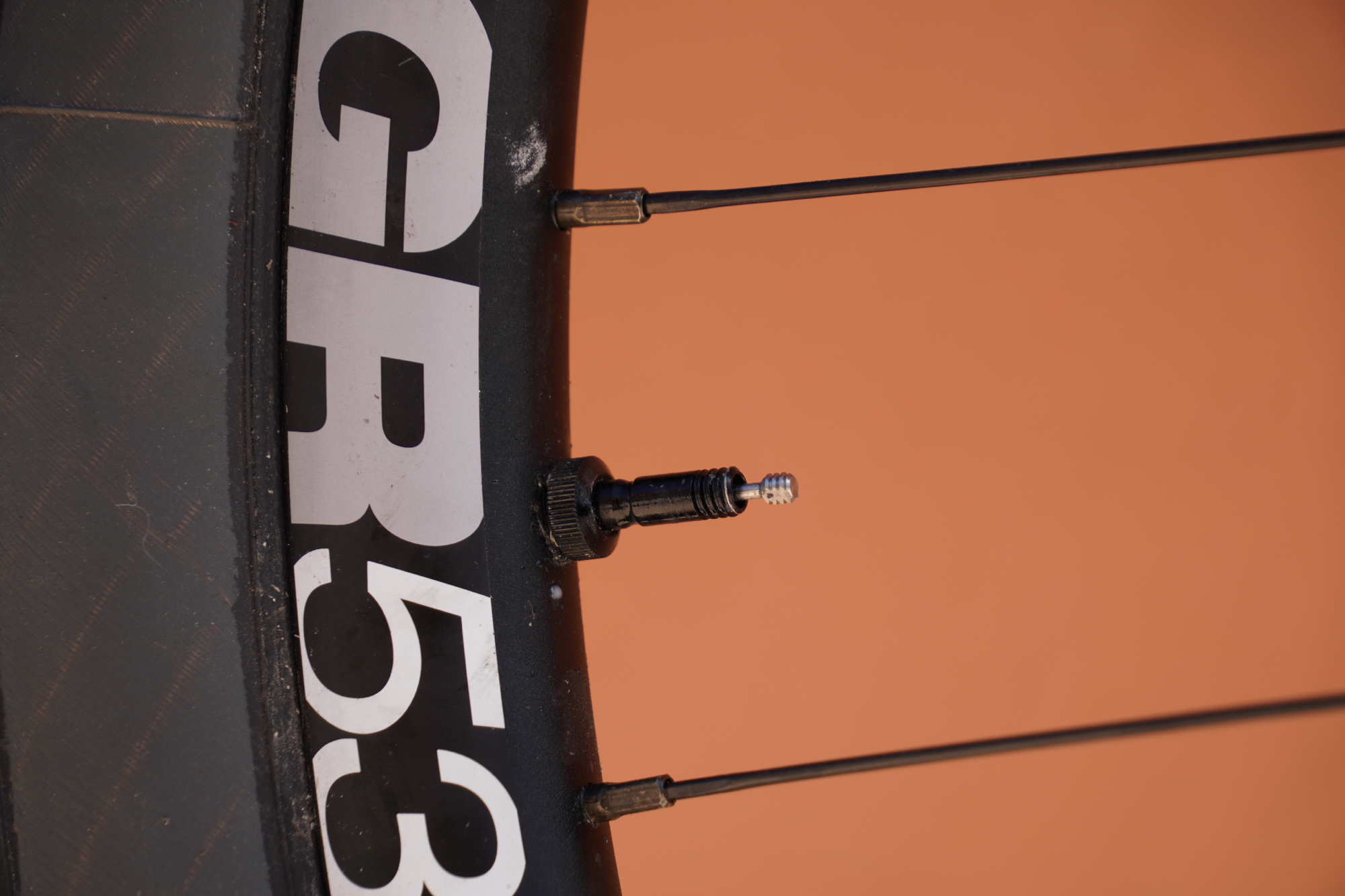
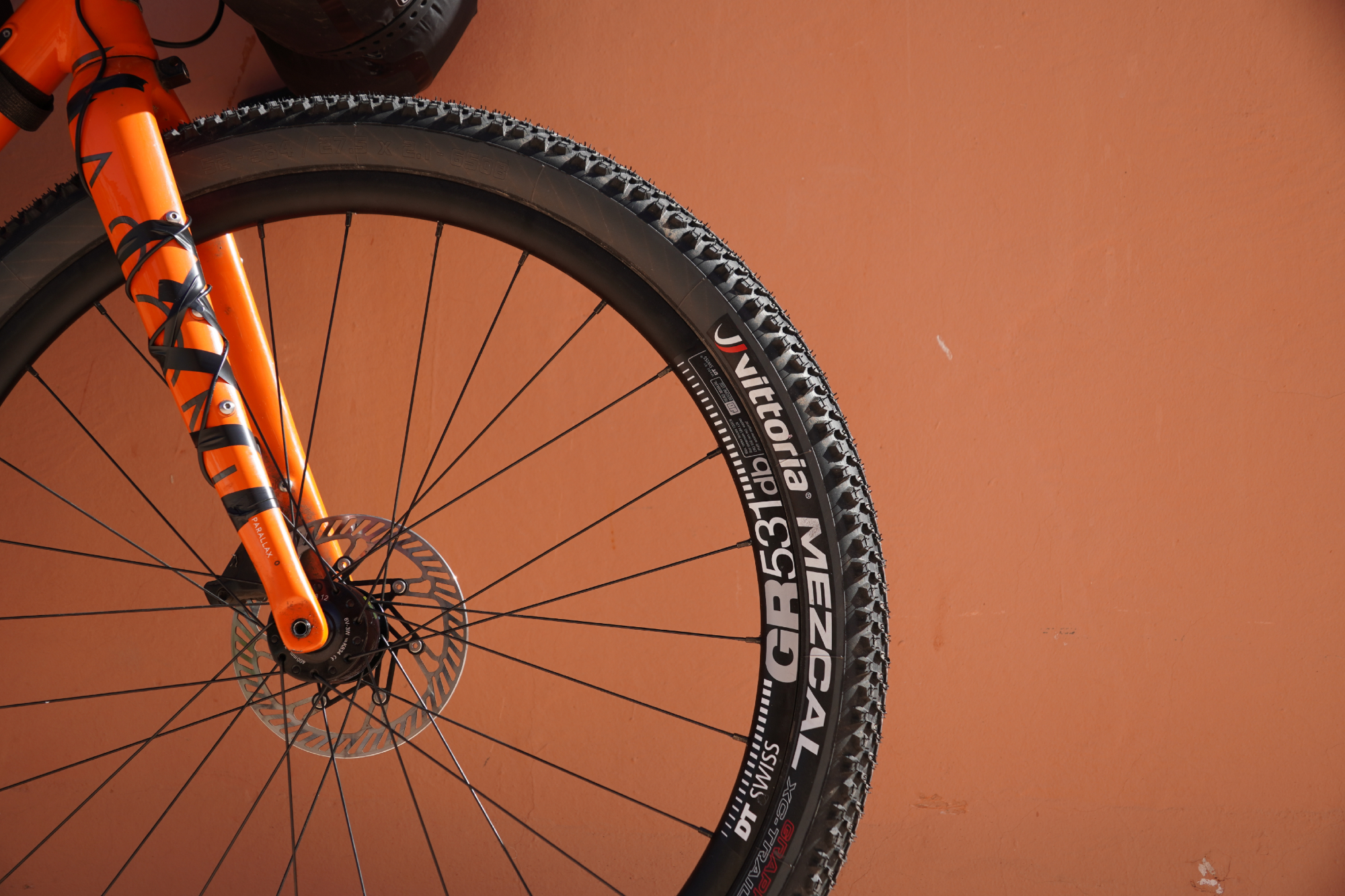
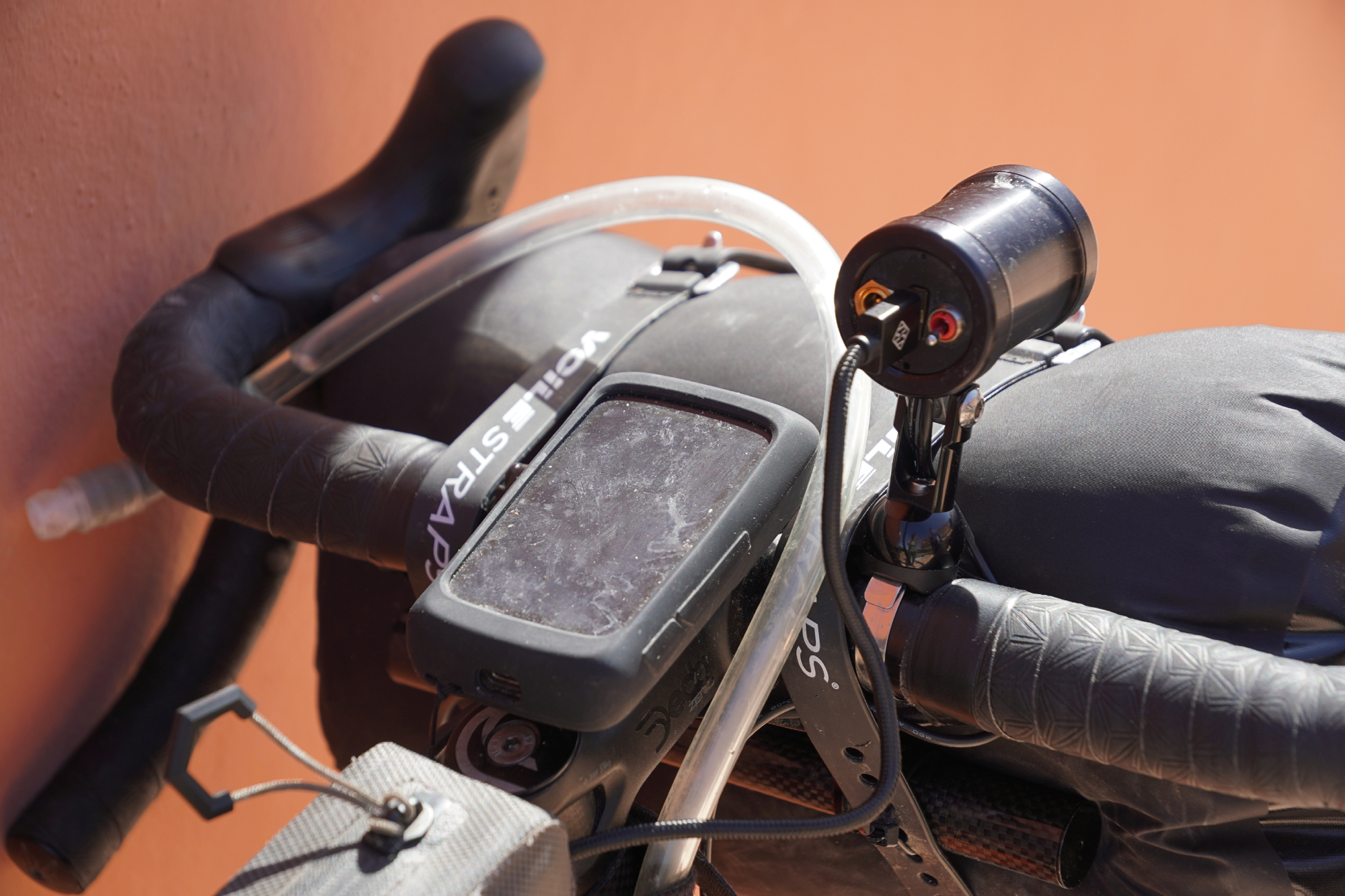
The tubeless valves are from Reserve (Santa Cruz bikes component arm) and these pack a host of neat features. They fit a presta pump chuck, but they have completely redesigned the internals. There’s no valve core for you to accidentally unscrew and the airflow is much greater, meaning you can seat a tubeless tire with just a hand mini bike pump - and even inject sealant straight through the valve without it clogging.
5. Marco Schicker's heavily modified Salsa
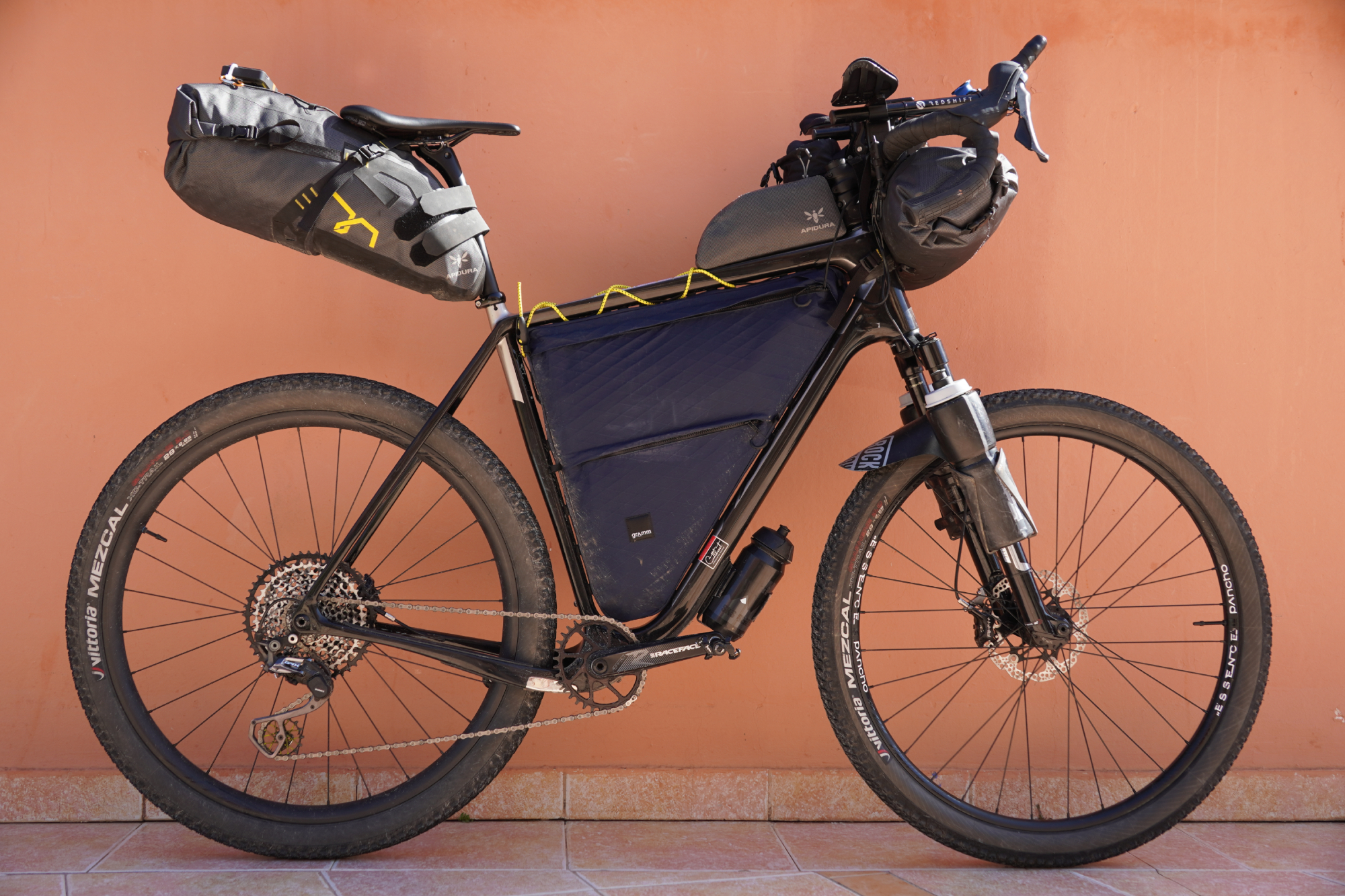
A very personalised build form Marco Schicker with barely any brands getting a name in more than twice. The high capacity water bottles even slightly mask the modifications made to the chassis - Schicker’s swapped out the rigid fork and is running 100mm of travel, rather than the 50mm you get with a gravel-specific fork.
The drivetrain is ostensibly Shimano GRX, but the cassette has been swapped out for a Garbaruk model for extra range. The cranks have been swapped for Raceface and an oval ring. And the brakes have been upgraded to Hope’s four pot calipers for extra braking power.
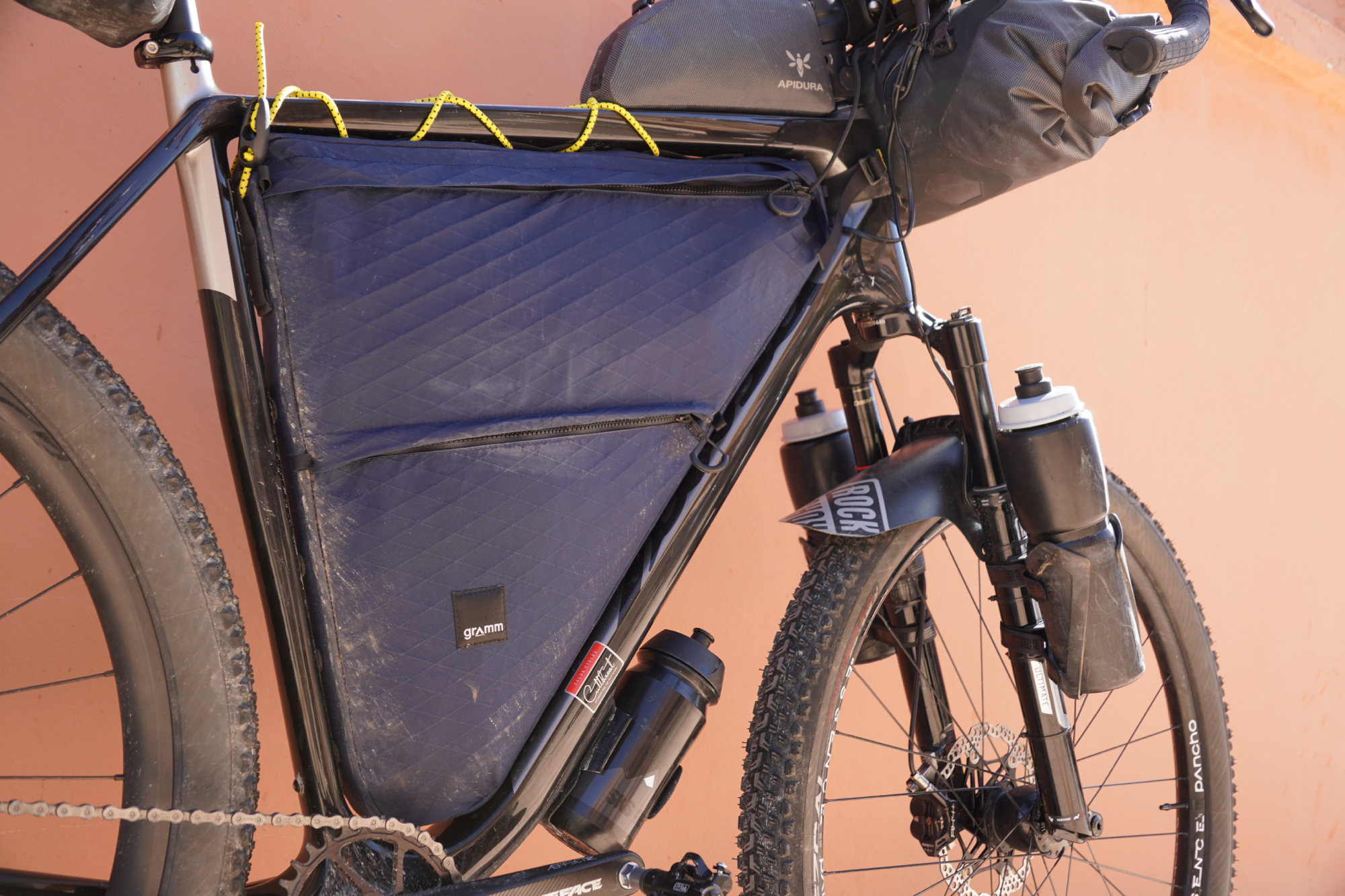
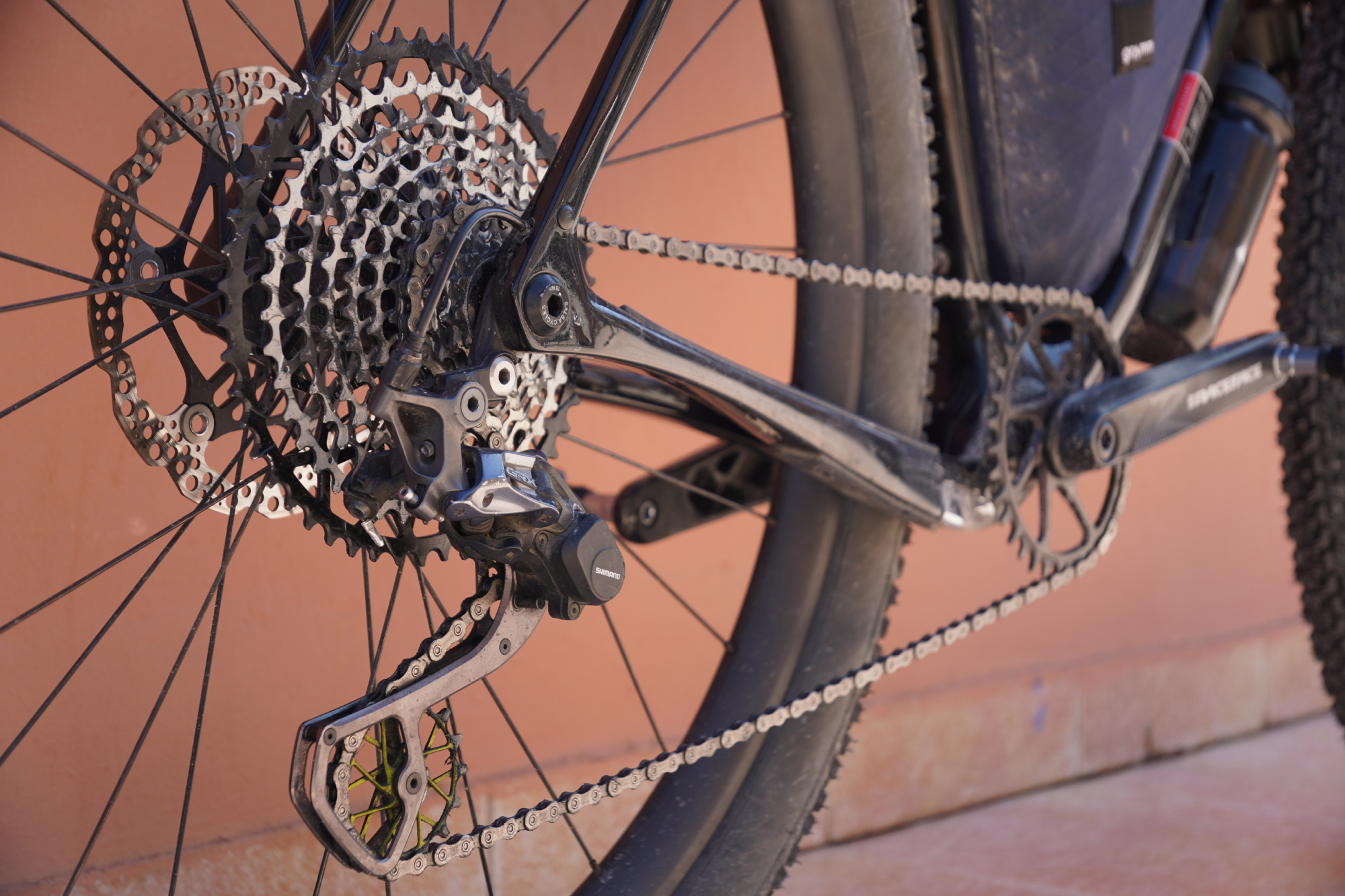
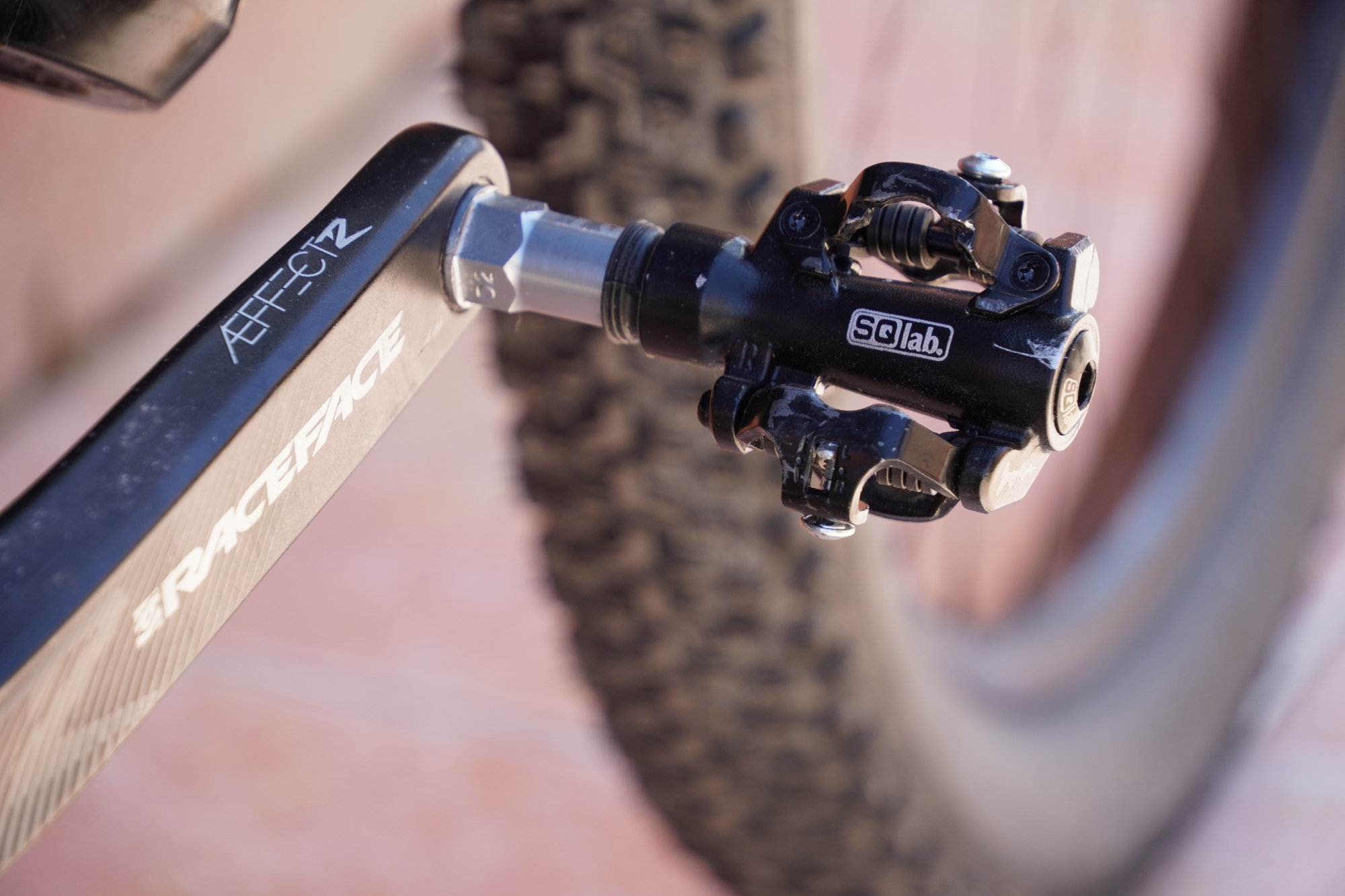
Smaller cyclists can suffer with a Q-factor that’s too wide, but Schicker finds that even at their widest, most stock setups still end up far too narrow. The solution has been a pair of SQlab SPD pedals with extra long axles to provide a stance width that’s sufficiently wide.
6. Annalisa Marini's bespoke steel build
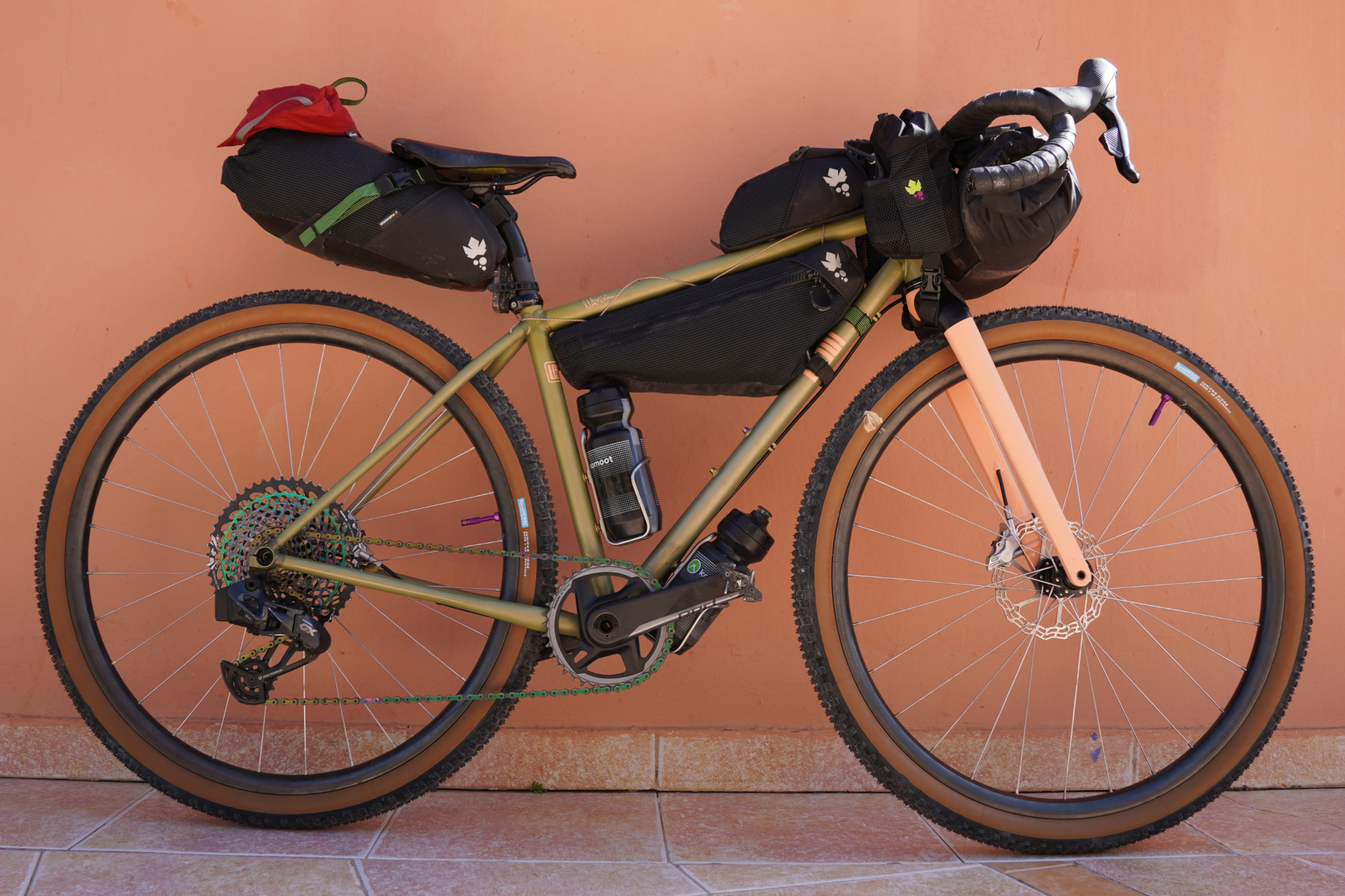
Annalisa Marini and her husband Niccolò Varanini have previously attempted the Atlas Mountain Race but sadly had to scratch after Marini began suffering from ‘Shermer's Neck’ - a condition some ultra-endurance athletes can suffer from, and is characterised by the failure of the neck muscles to support the head any longer.
Generally this can be solved by a good bike fit. Now, using a seatpost with a greater amount of setback along, a shorter stem and upgrading the brake calipers (another instance of Hope’s four pot model being used), hopefully those issues won’t resurface this time.
Further boosting the comfort is a CaneCreek eeSilk suspension stem with tunable compliance, but one element which wasn’t up for being swapped was the frame. With steel tubing and custom geometry, this was handbuilt in Barcelona - and features elements you rarely see these days on mass produced models, such as fully housed external cable routing for ease of maintenance and weather protection.
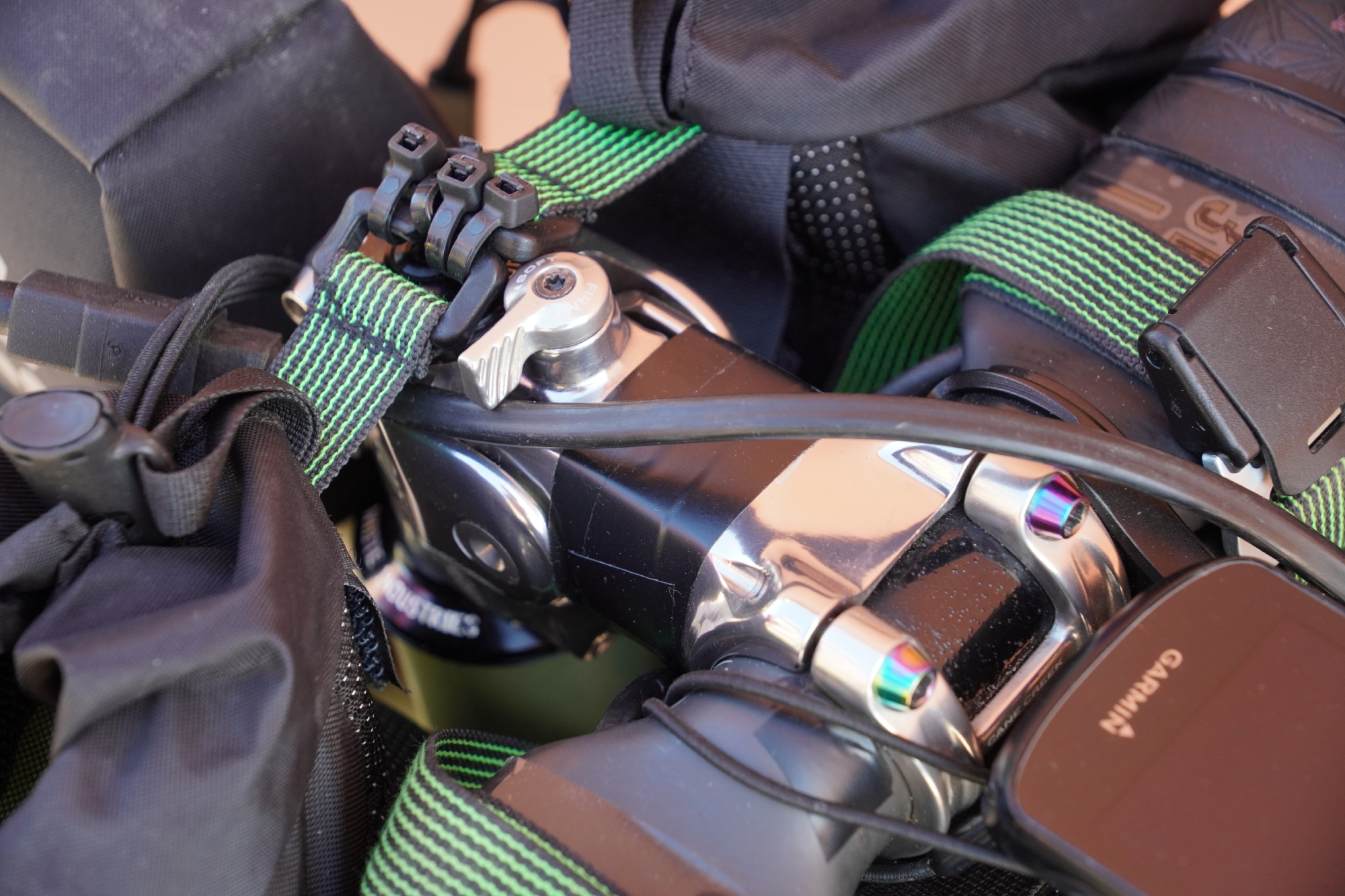
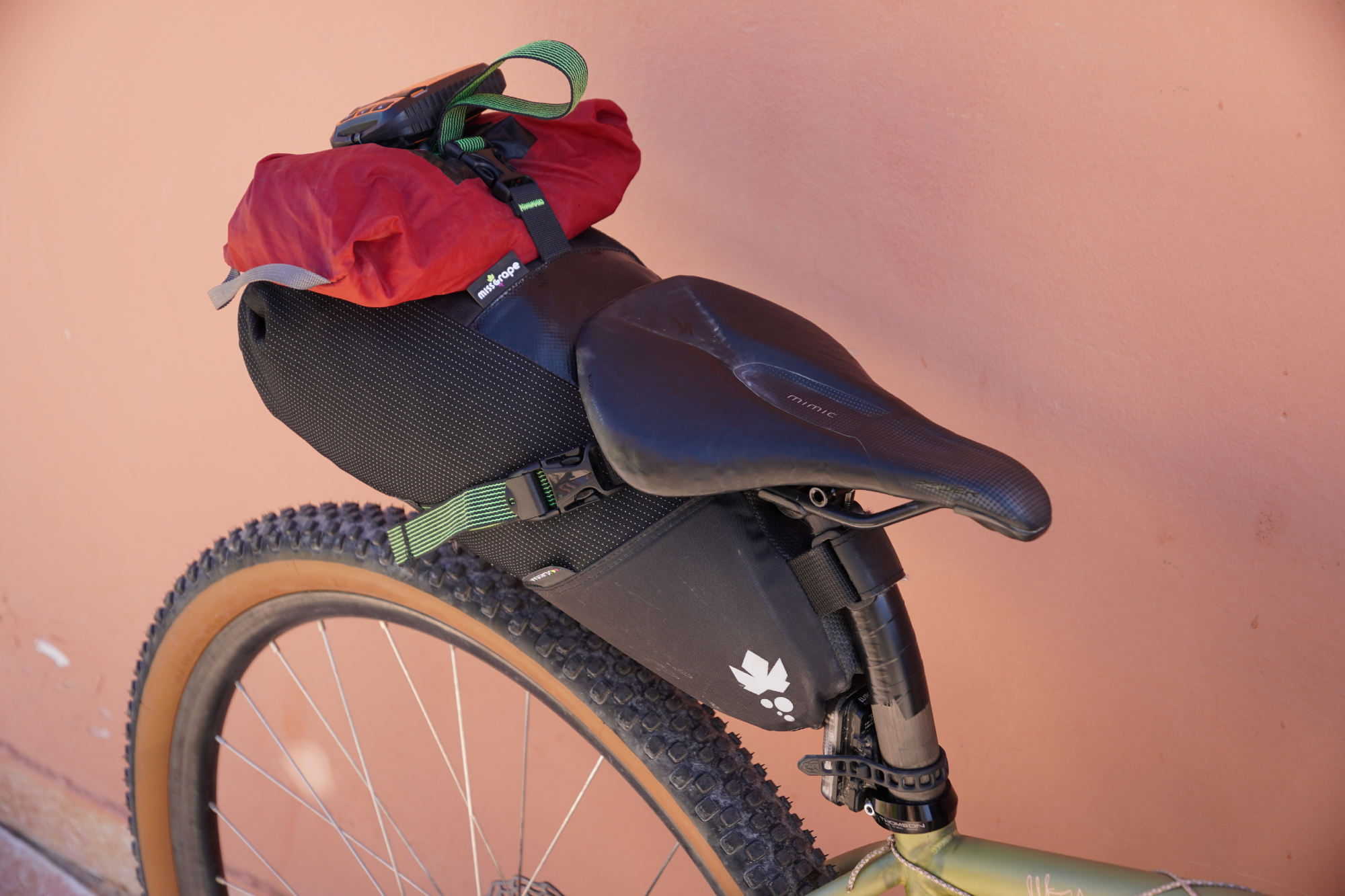
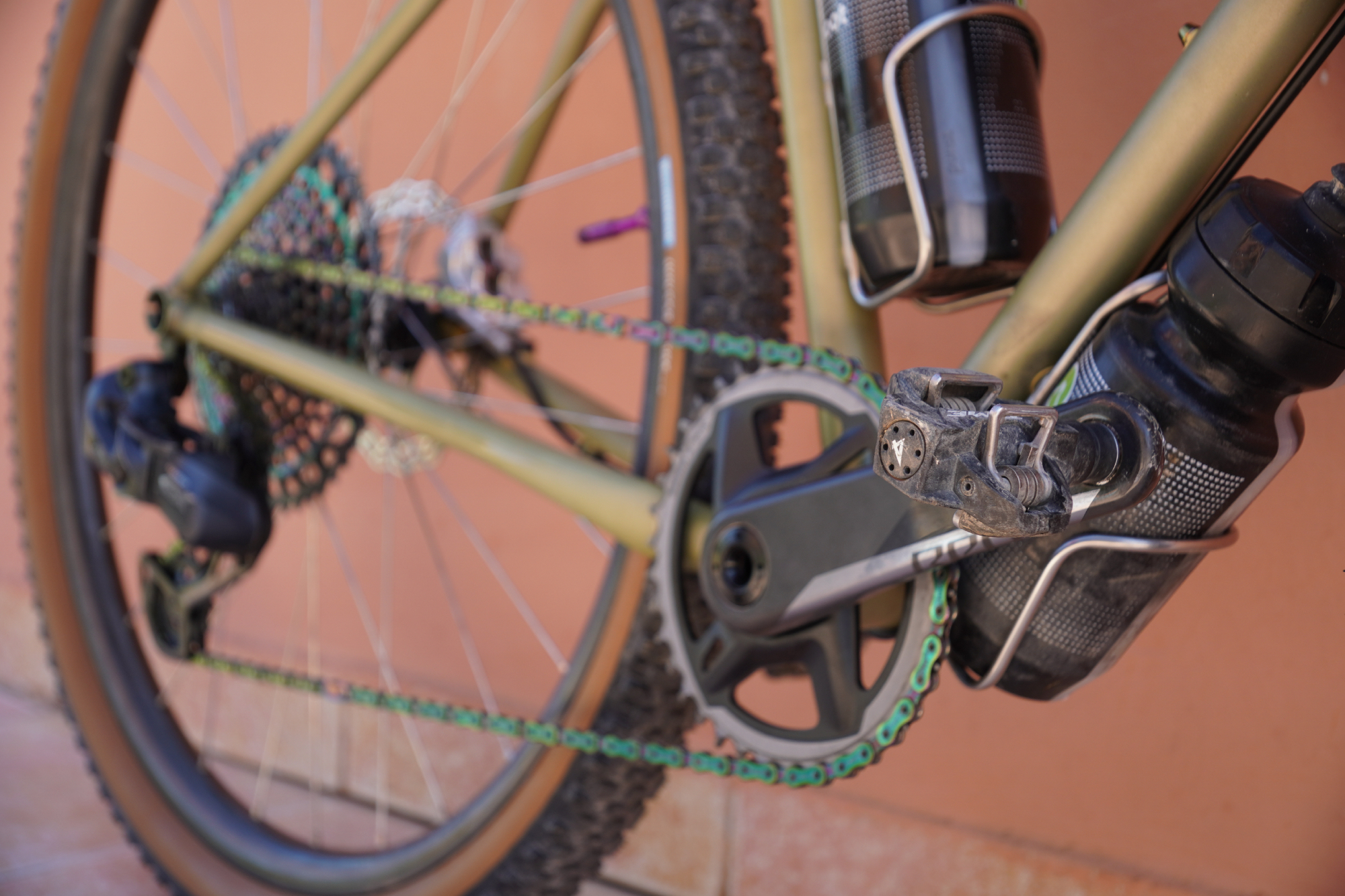

Perhaps not so necessary for the dry dust of Morocco, but where Marini and Varanini live in Italy, heavy claggy mud is a pervading issue. Standard Shimano style SPDs just won’t cut it and the pair have landed on Time’s pedal-cleat system as the most dependable option they’ve found.

Thank you for reading 20 articles this month* Join now for unlimited access
Enjoy your first month for just £1 / $1 / €1
*Read 5 free articles per month without a subscription

Join now for unlimited access
Try first month for just £1 / $1 / €1
Get The Leadout Newsletter
The latest race content, interviews, features, reviews and expert buying guides, direct to your inbox!

After winning the 2019 National Single-Speed Cross-Country Mountain Biking Championships and claiming the plushie unicorn (true story), Stefan swapped the flat-bars for drop-bars and has never looked back.
Since then, he’s earnt his 2ⁿᵈ cat racing licence in his first season racing as a third, completed the South Downs Double in under 20 hours and Everested in under 12.
But his favourite rides are multiday bikepacking trips, with all the huge amount of cycling tech and long days spent exploring new roads and trails - as well as histories and cultures. Most recently, he’s spent two weeks riding from Budapest into the mountains of Slovakia.
Height: 177cm
Weight: 67–69kg
- Anna Marie AbramFitness Features Editor
-
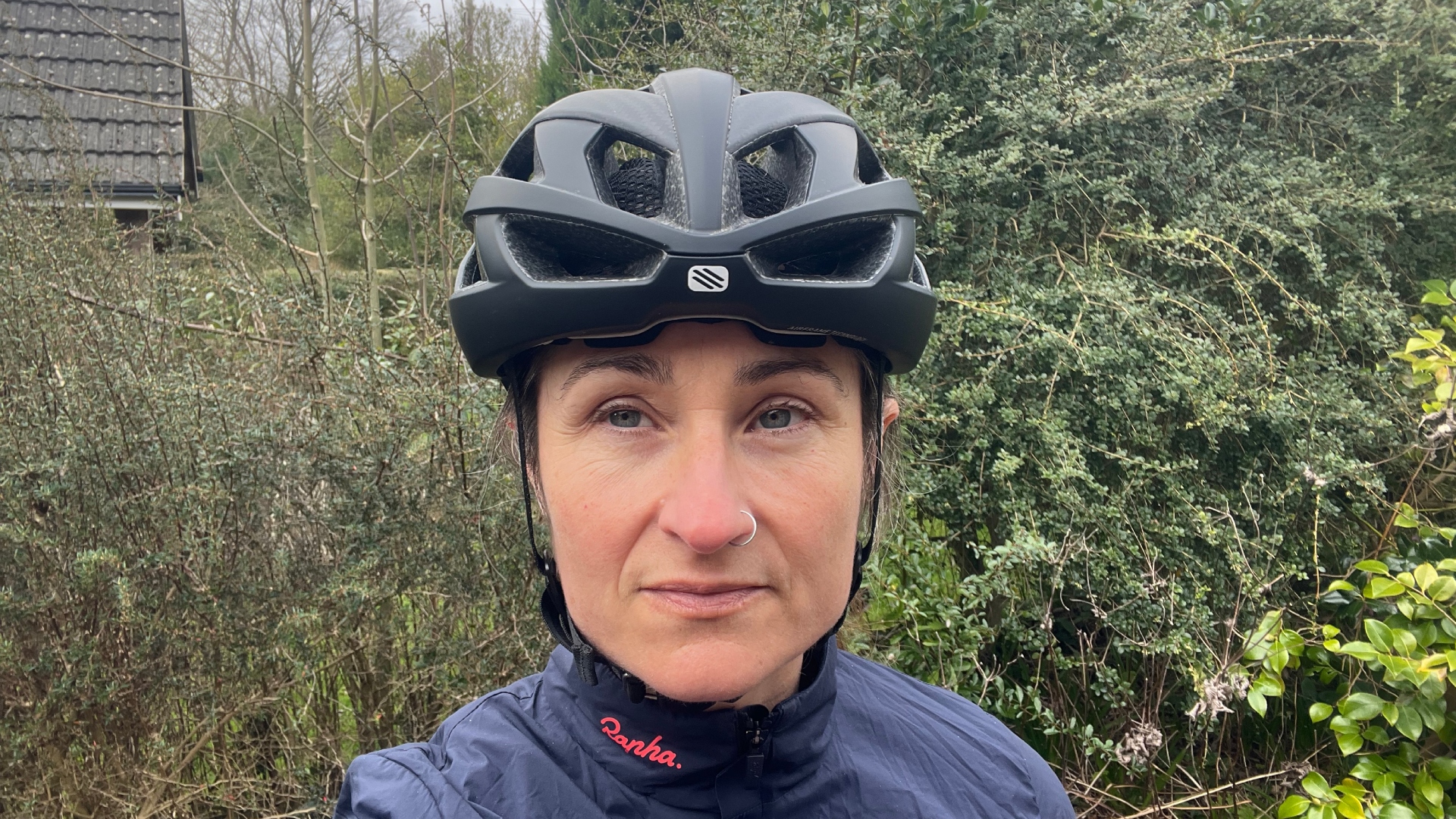 Rudy Project Rebel bike helmet review
Rudy Project Rebel bike helmet reviewRebelling against the solid shell oversized helmet fashion, the Rudy Project Rebel goes big on ventilation and breathability, but there is a weight penalty
By Hannah Bussey Published
-
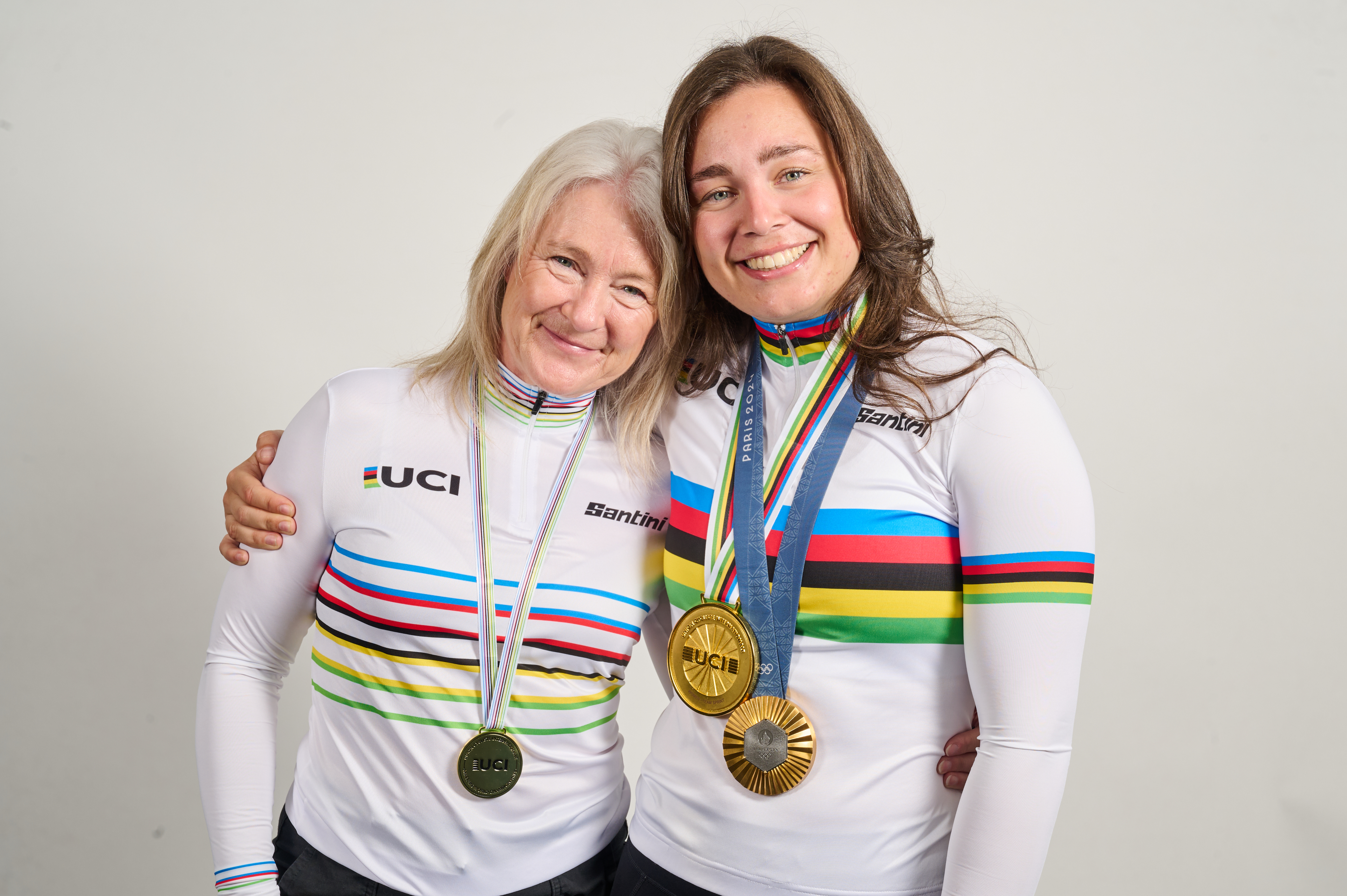 'I wanted to be world and Olympic champion – my parents made me feel that it was possible': Meet Sophie Capewell and her gold medal-winning mum
'I wanted to be world and Olympic champion – my parents made me feel that it was possible': Meet Sophie Capewell and her gold medal-winning mumSome mothers and daughters make memories together. The world-beating Capewells make history too. Tom Davidson meets the extraordinary duo
By Tom Davidson Published